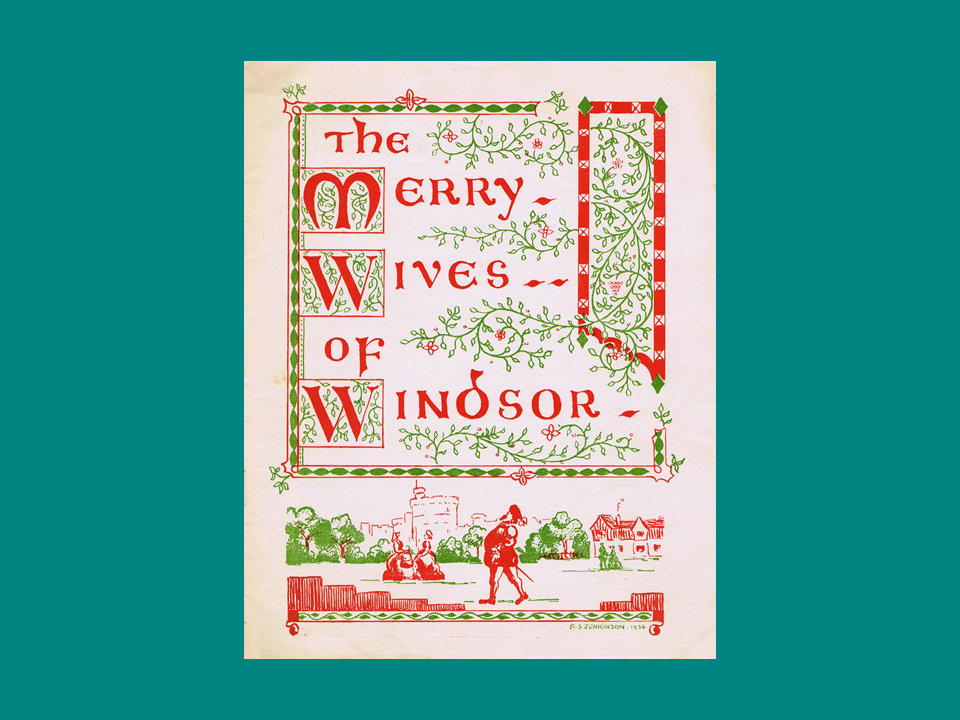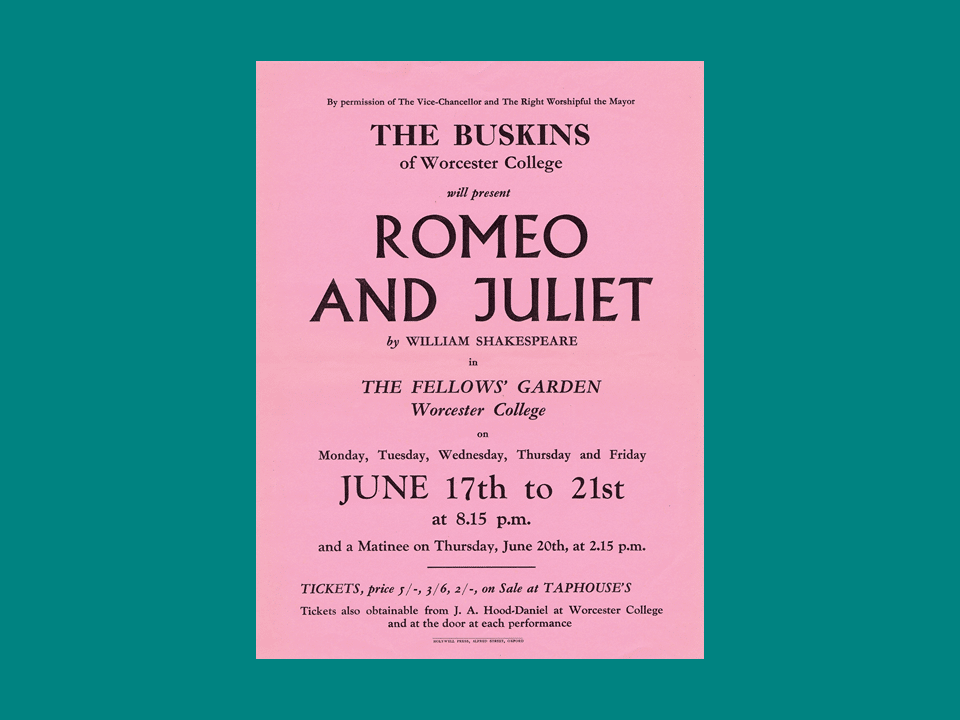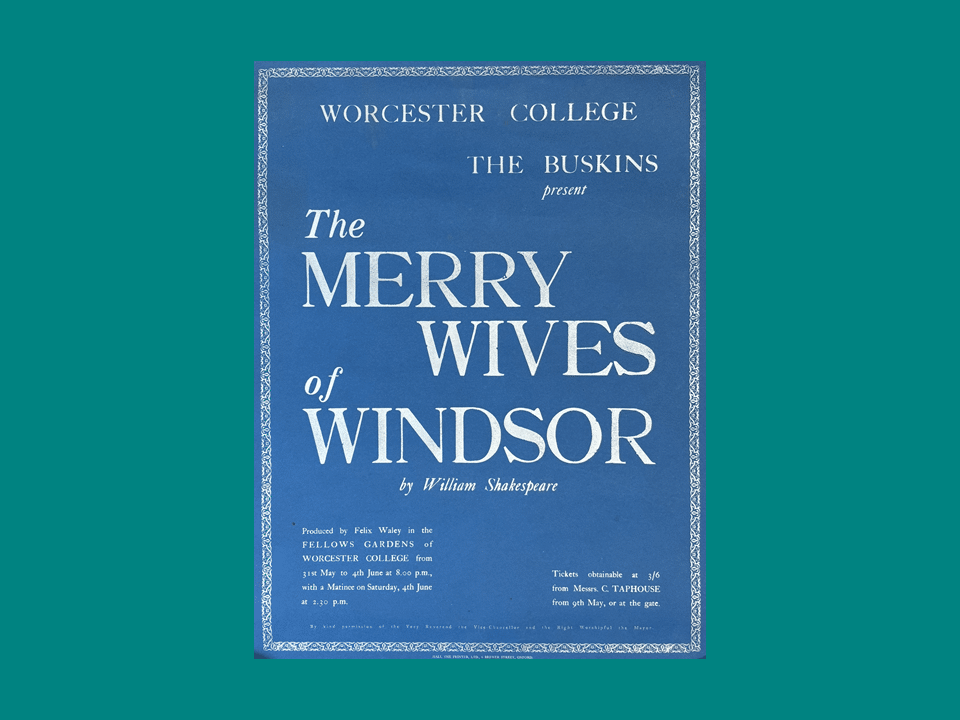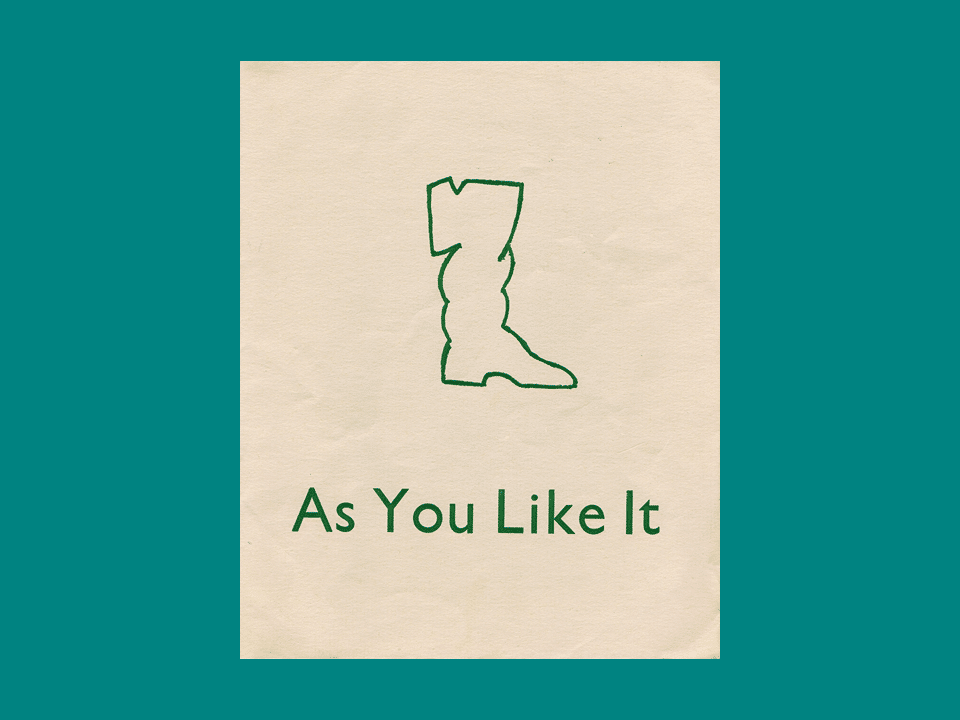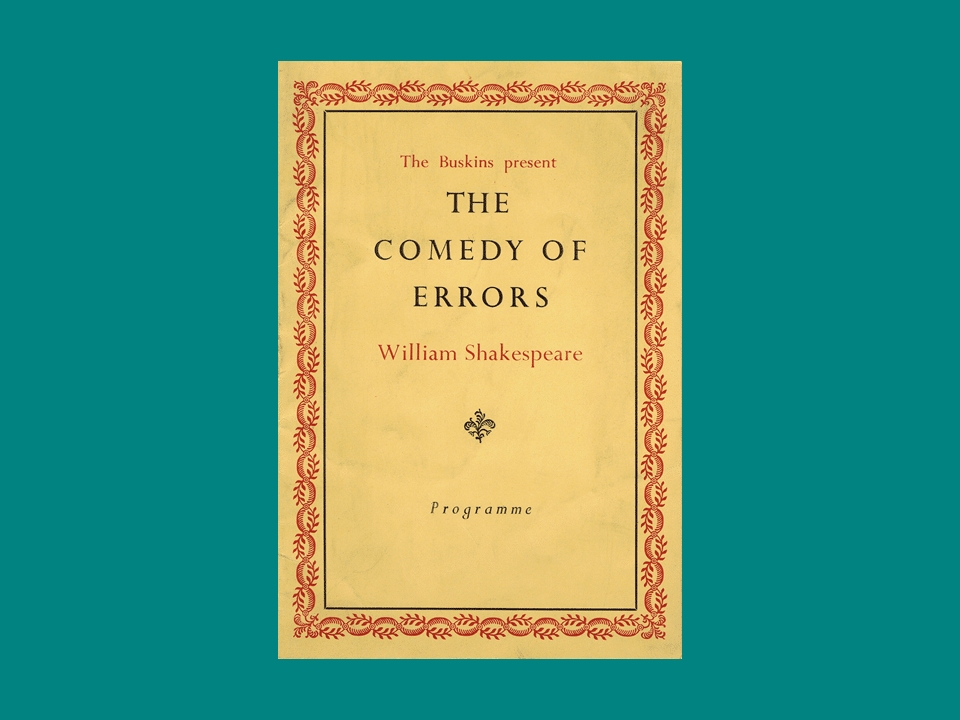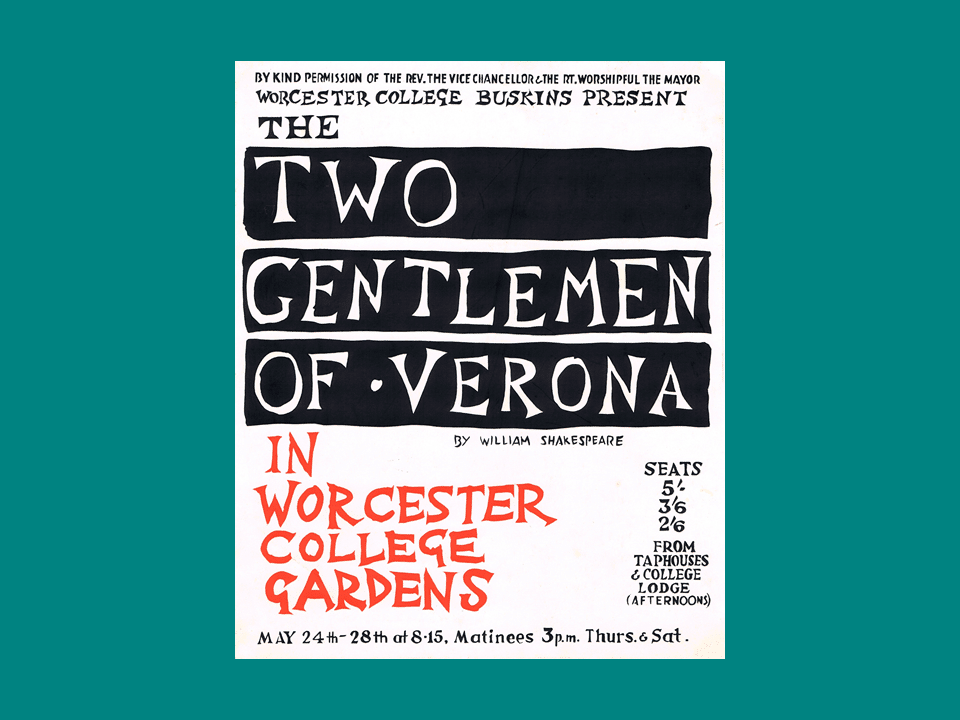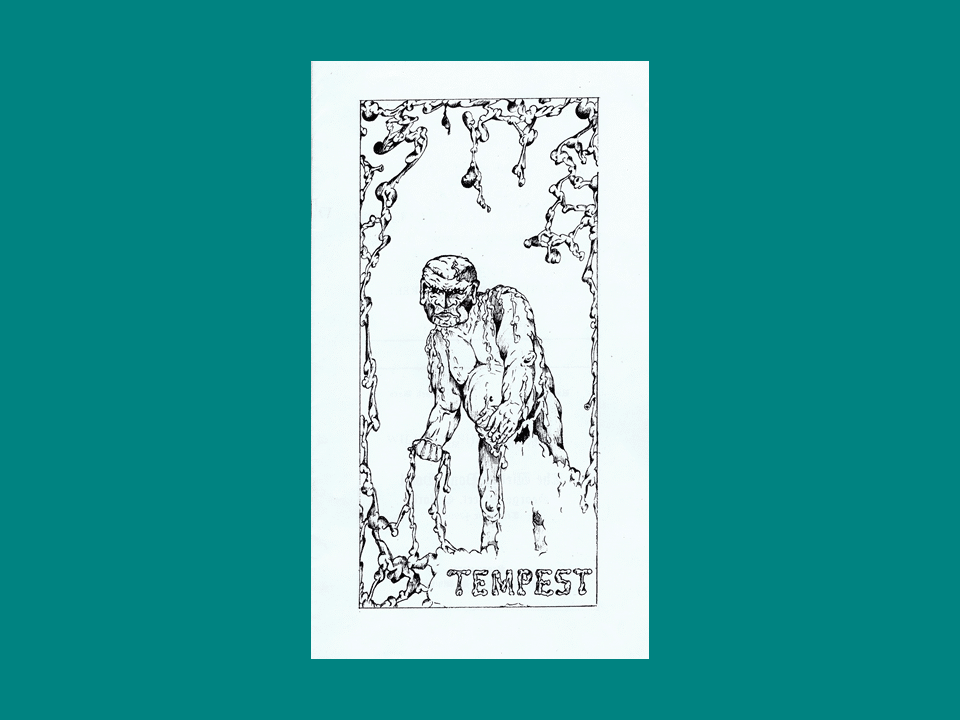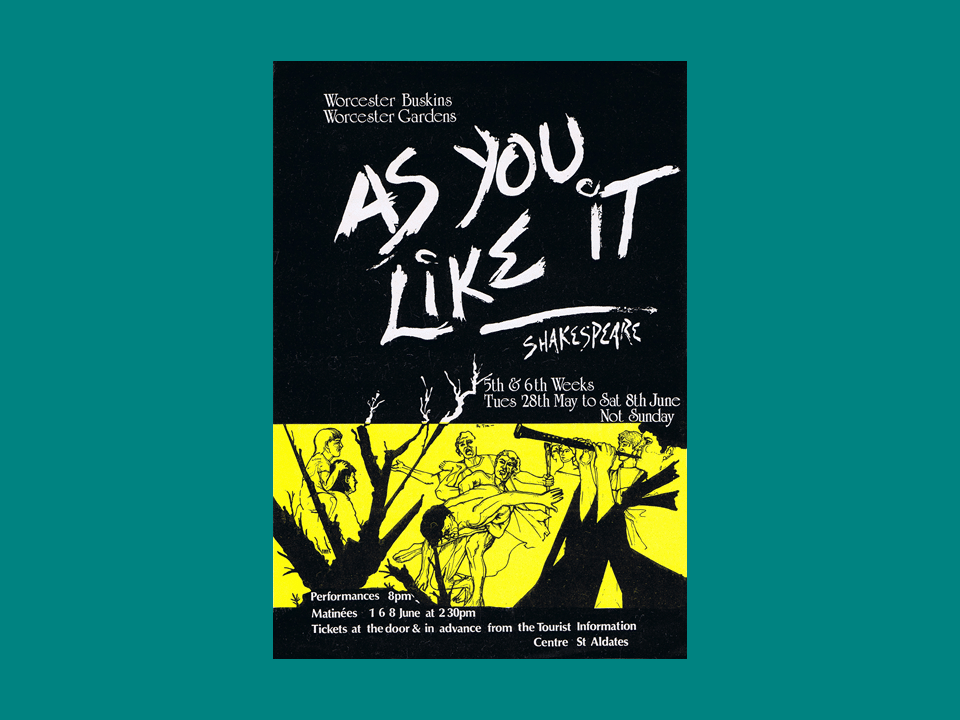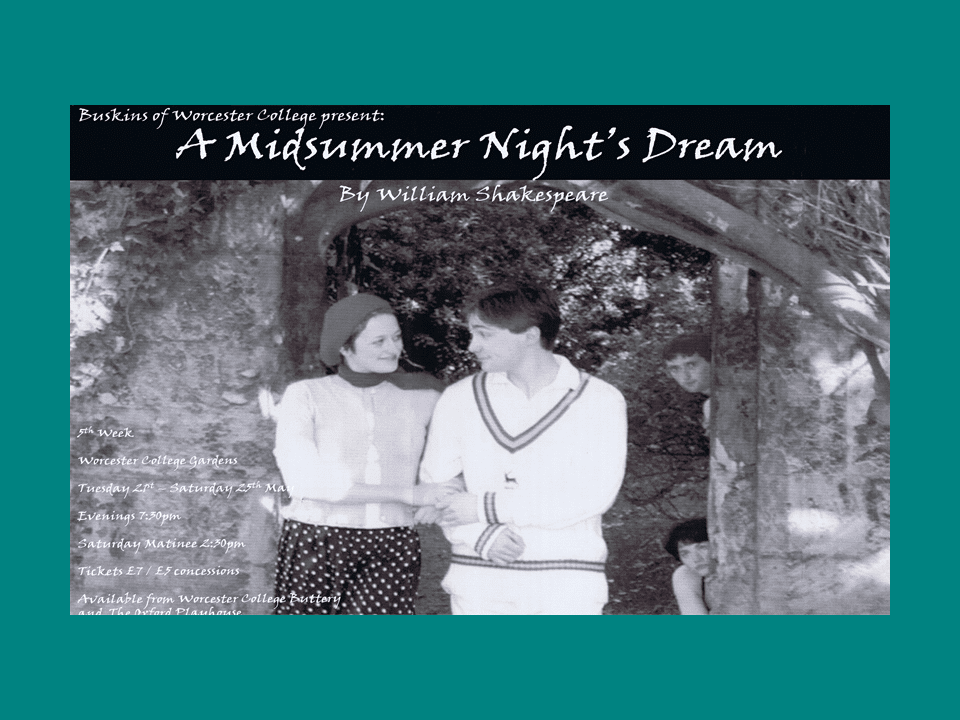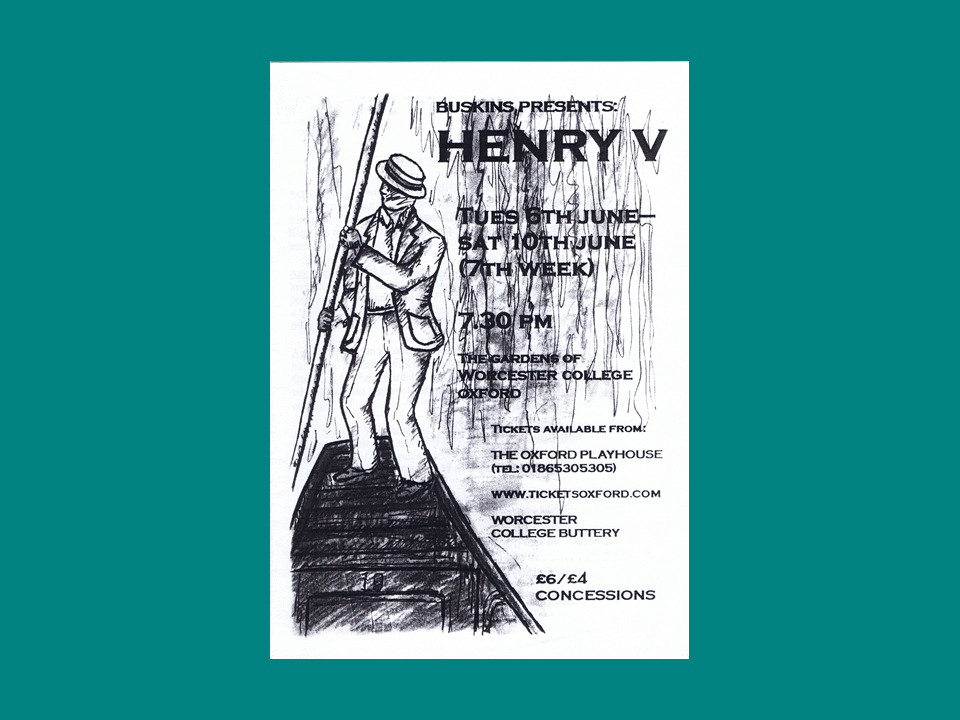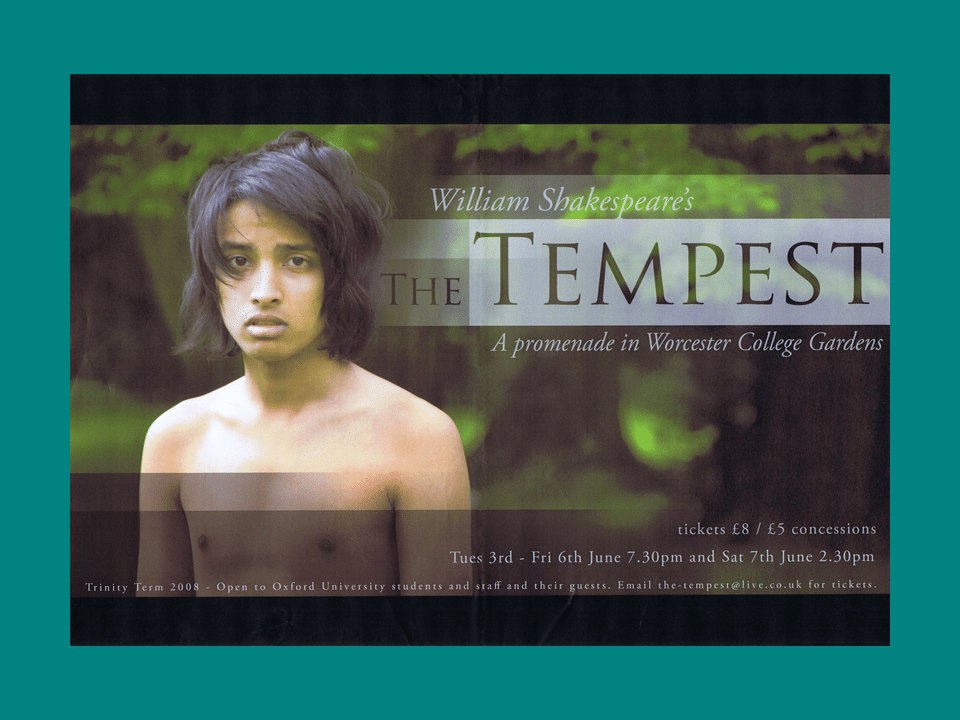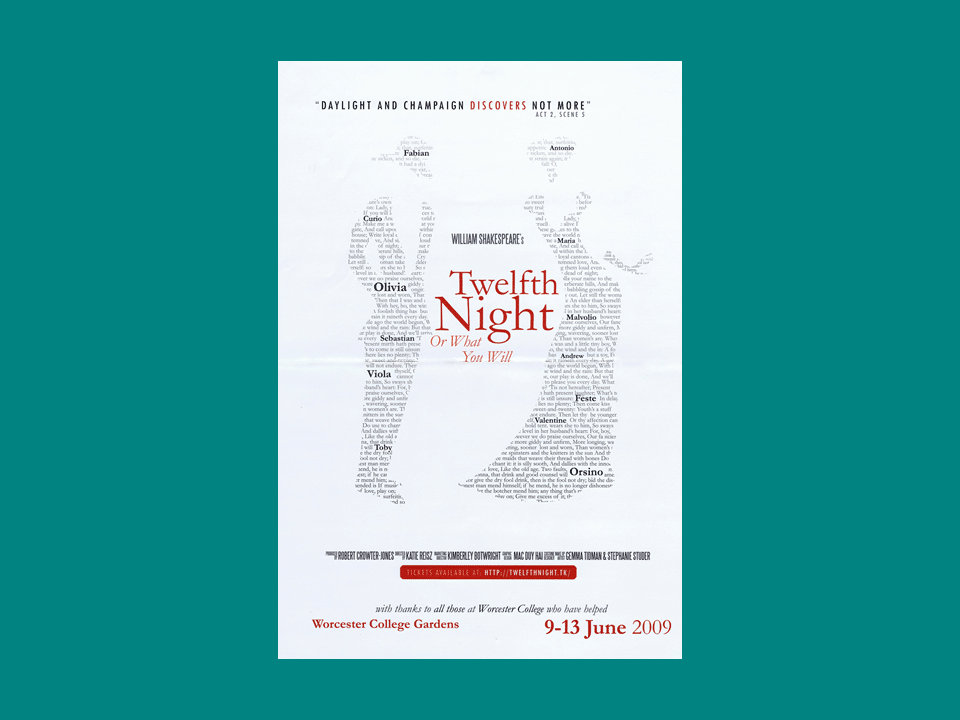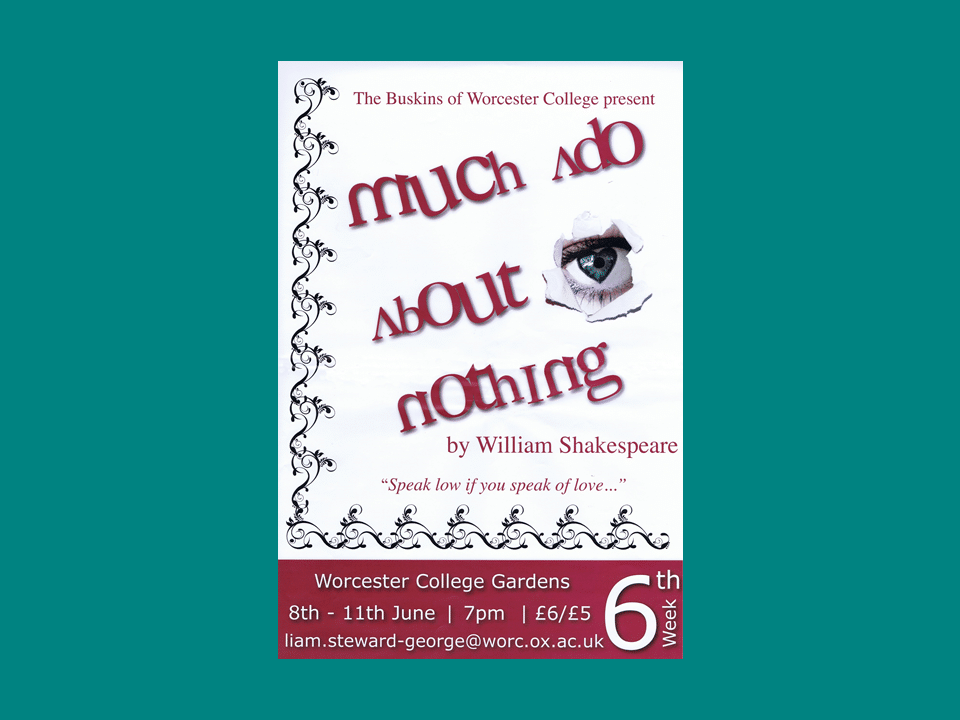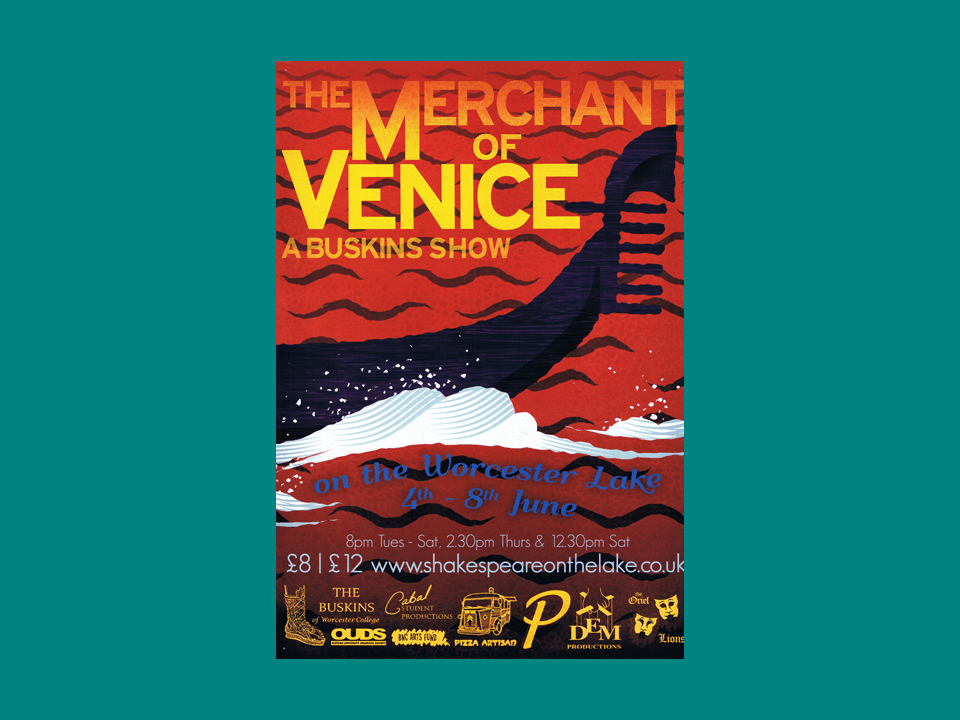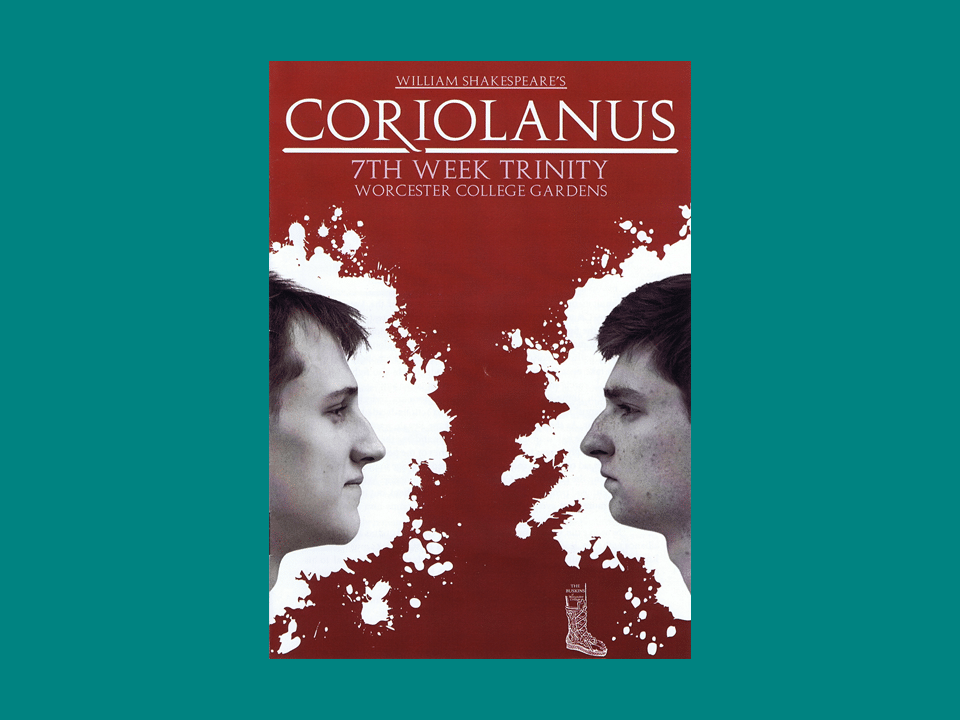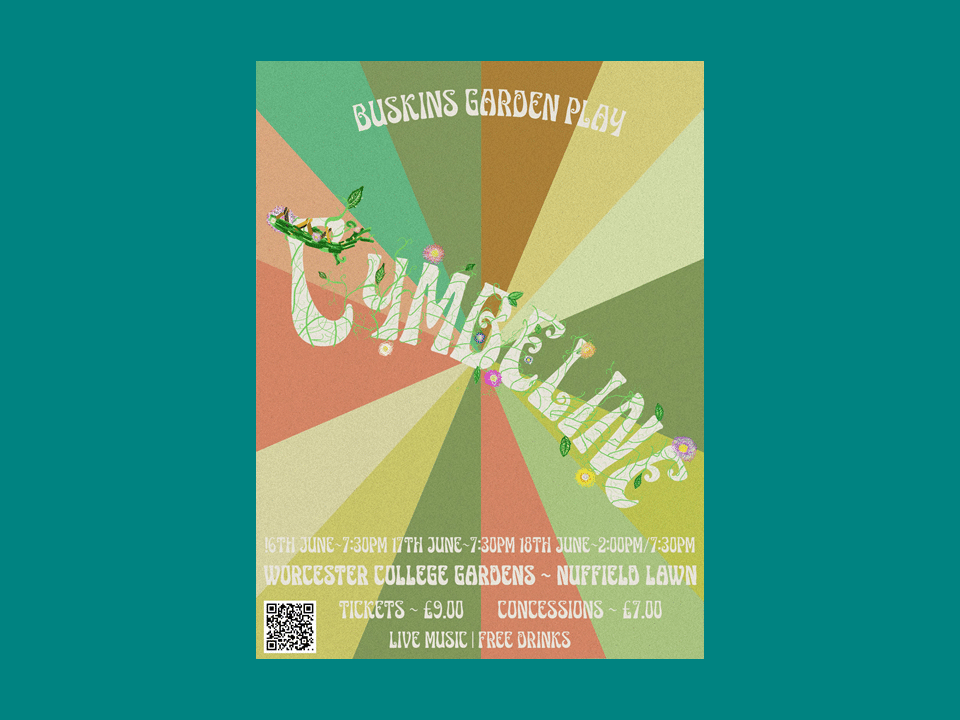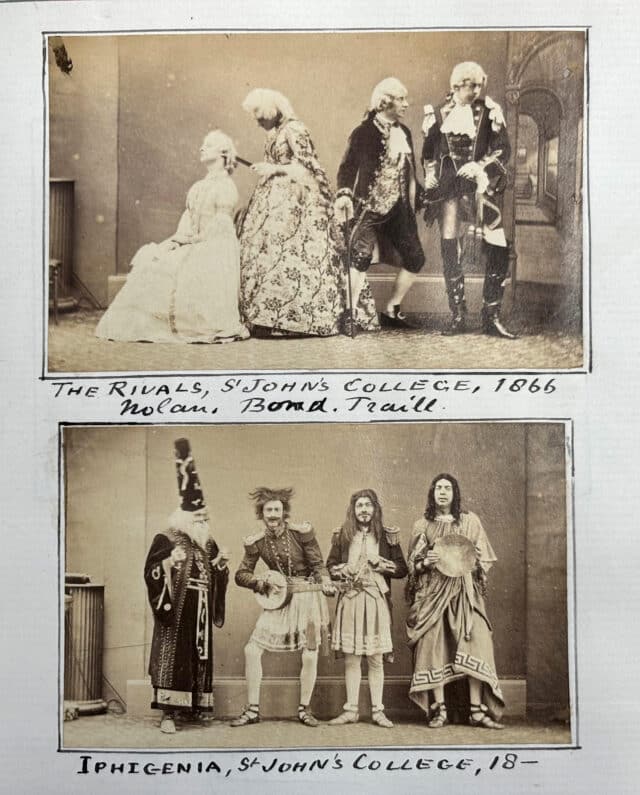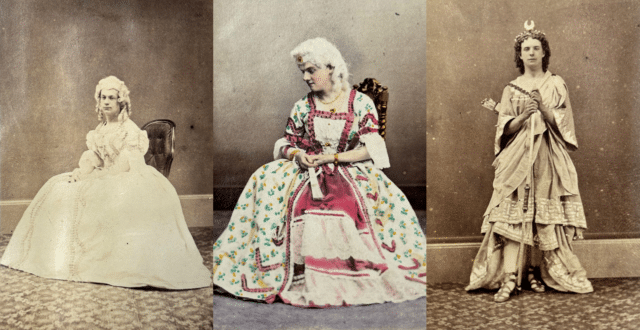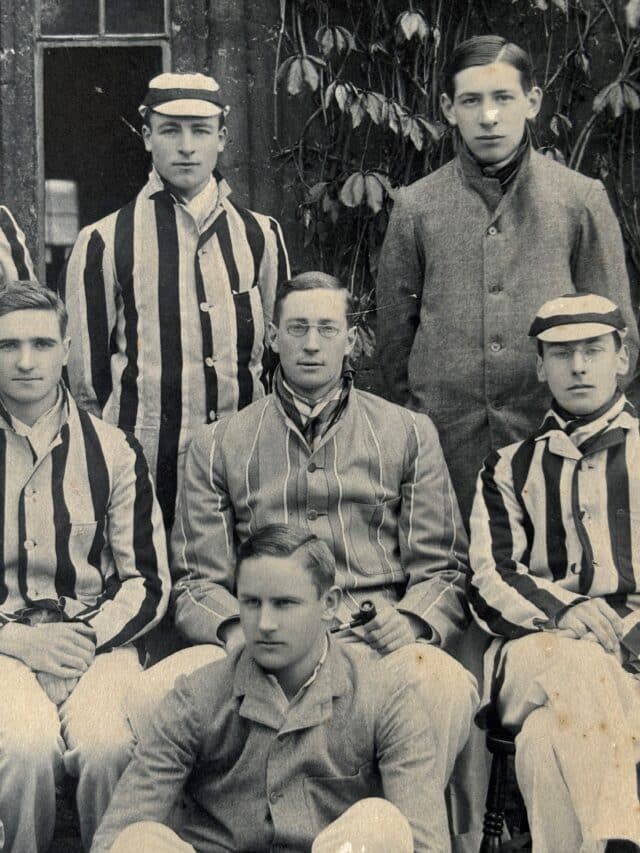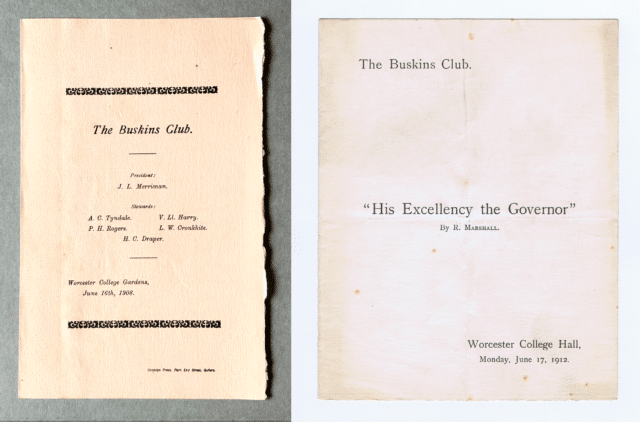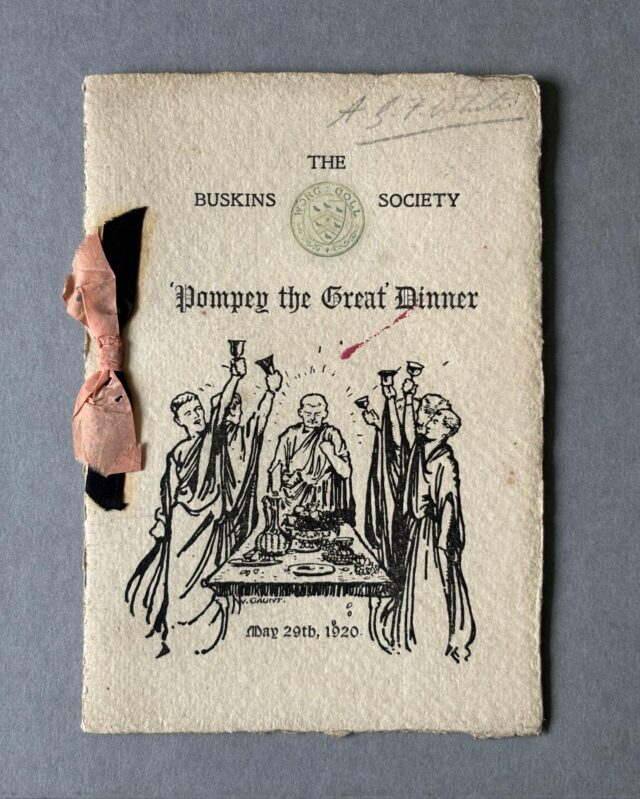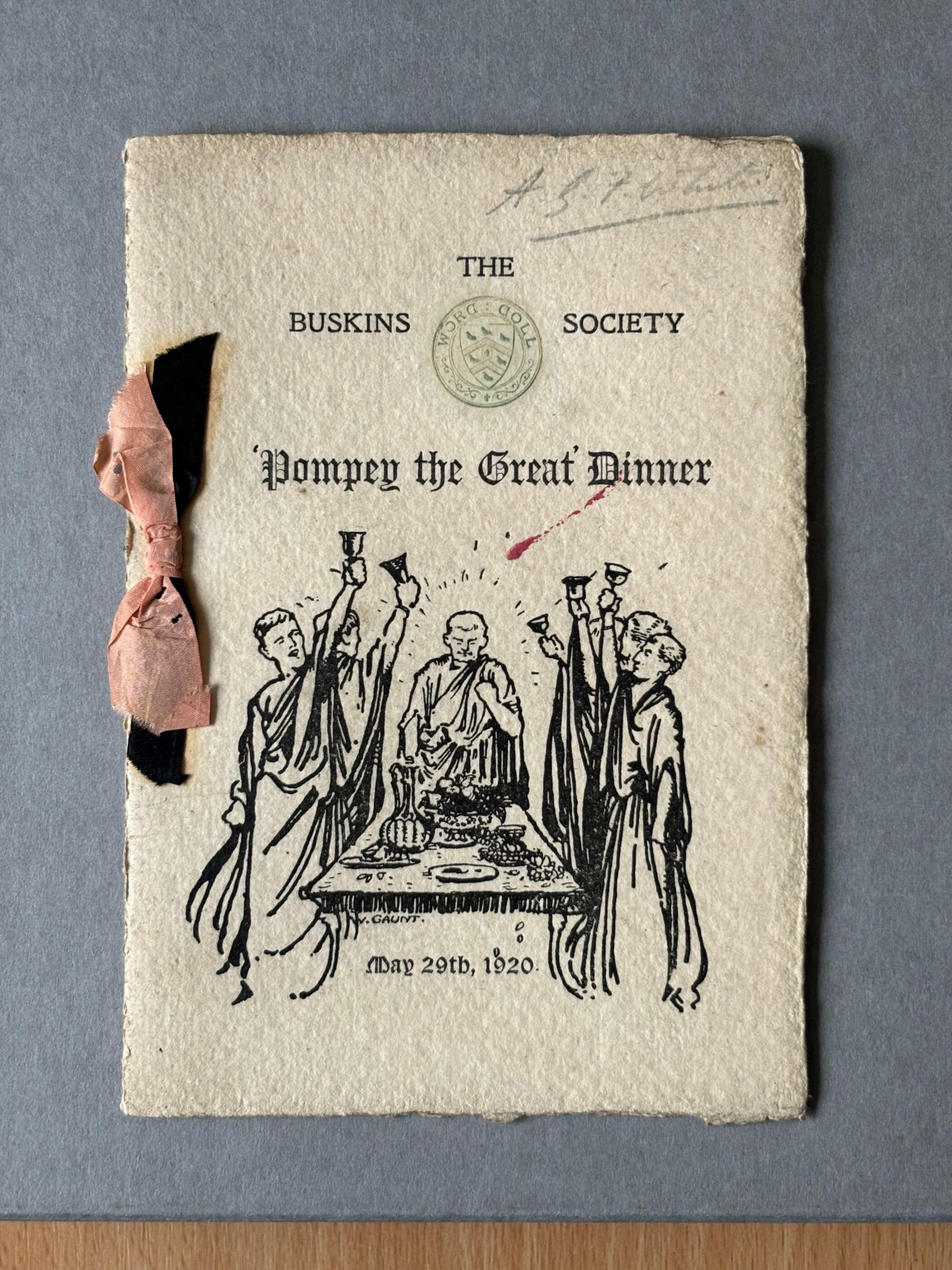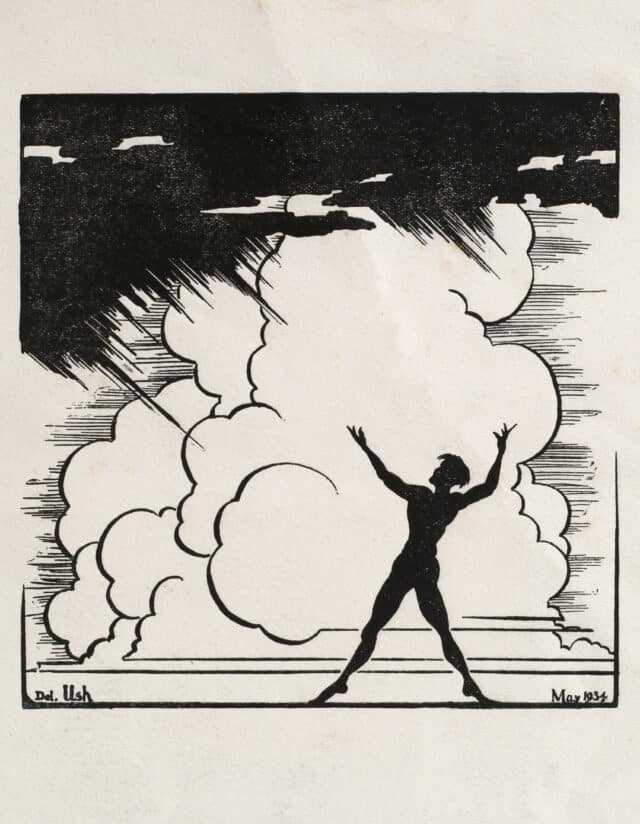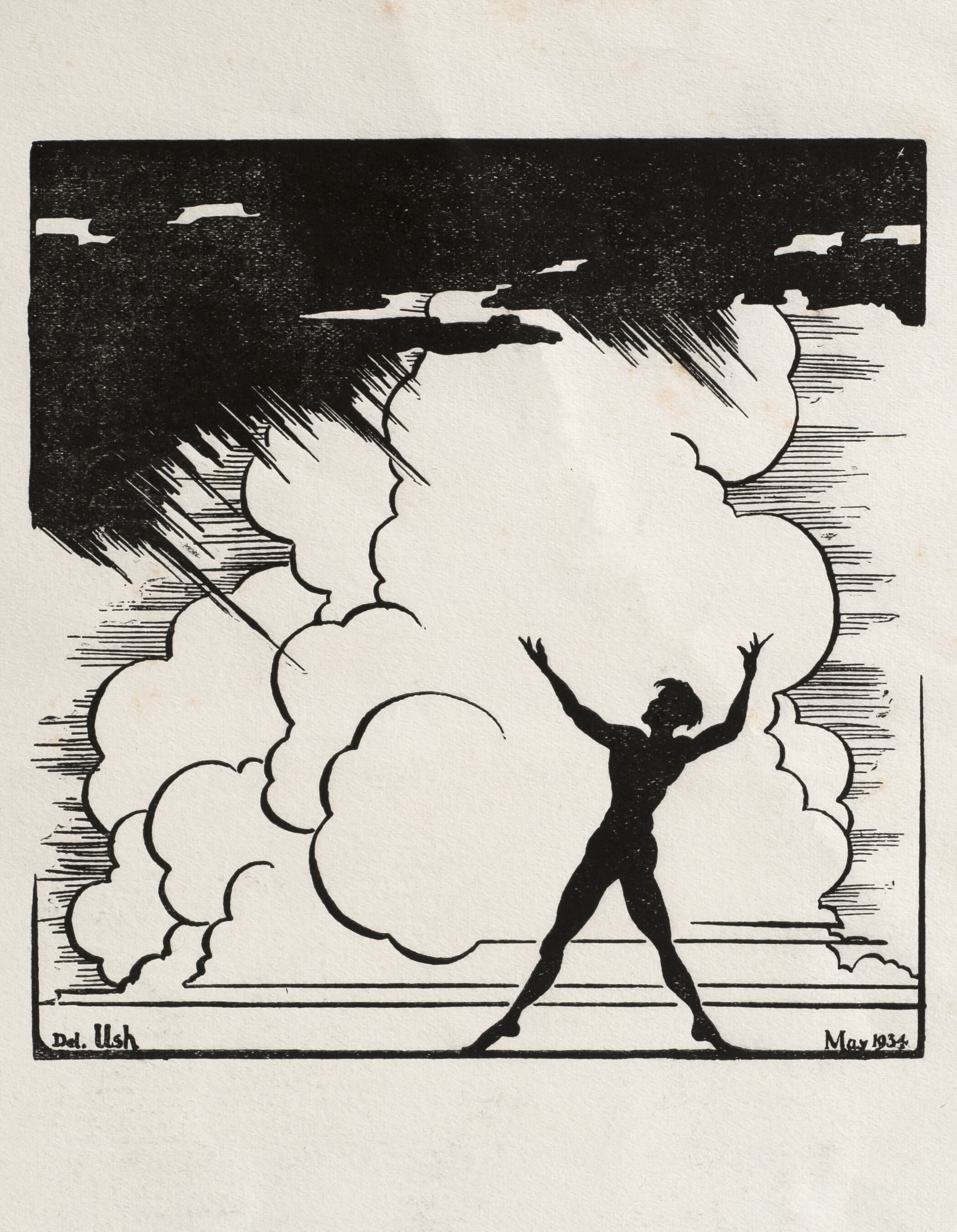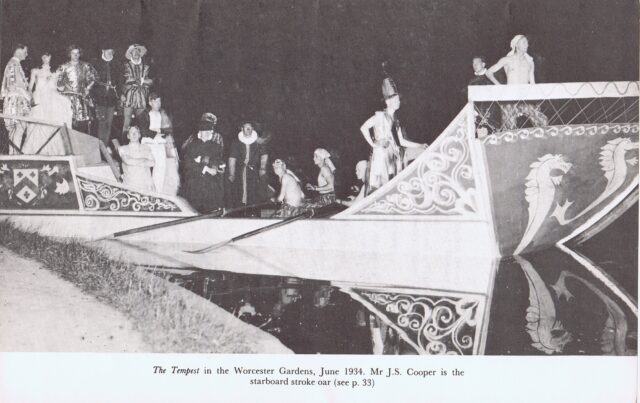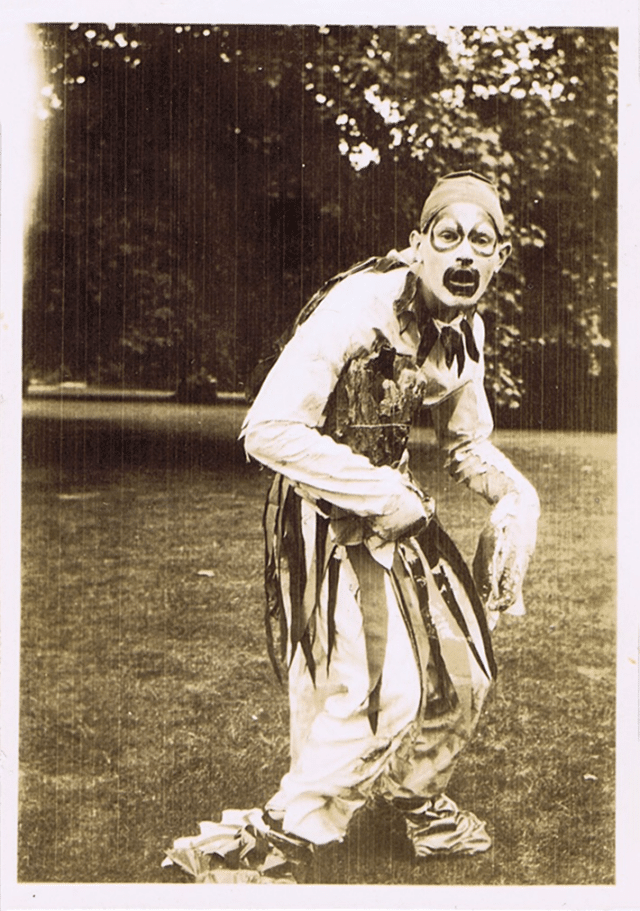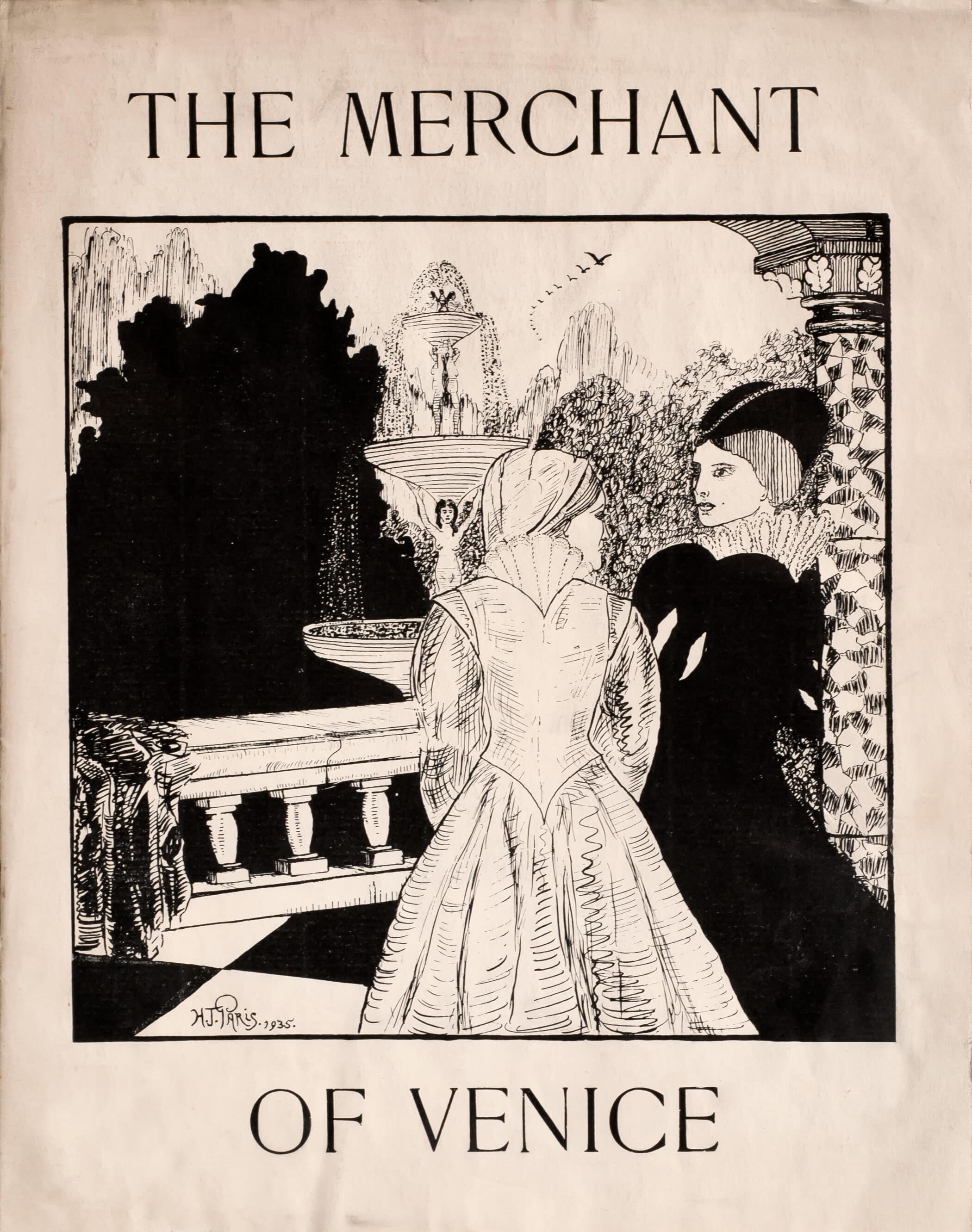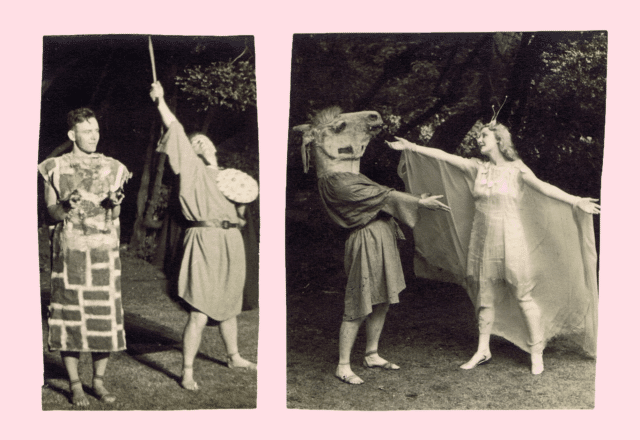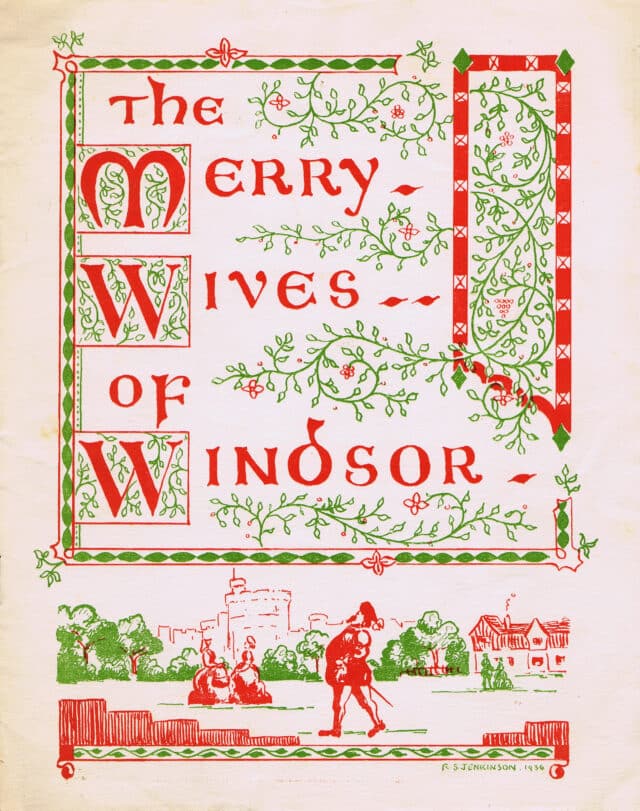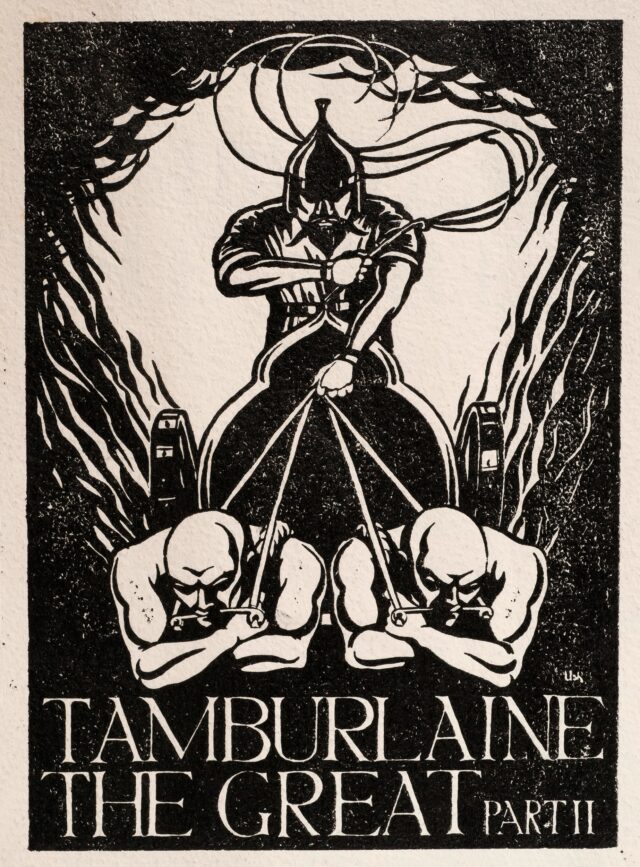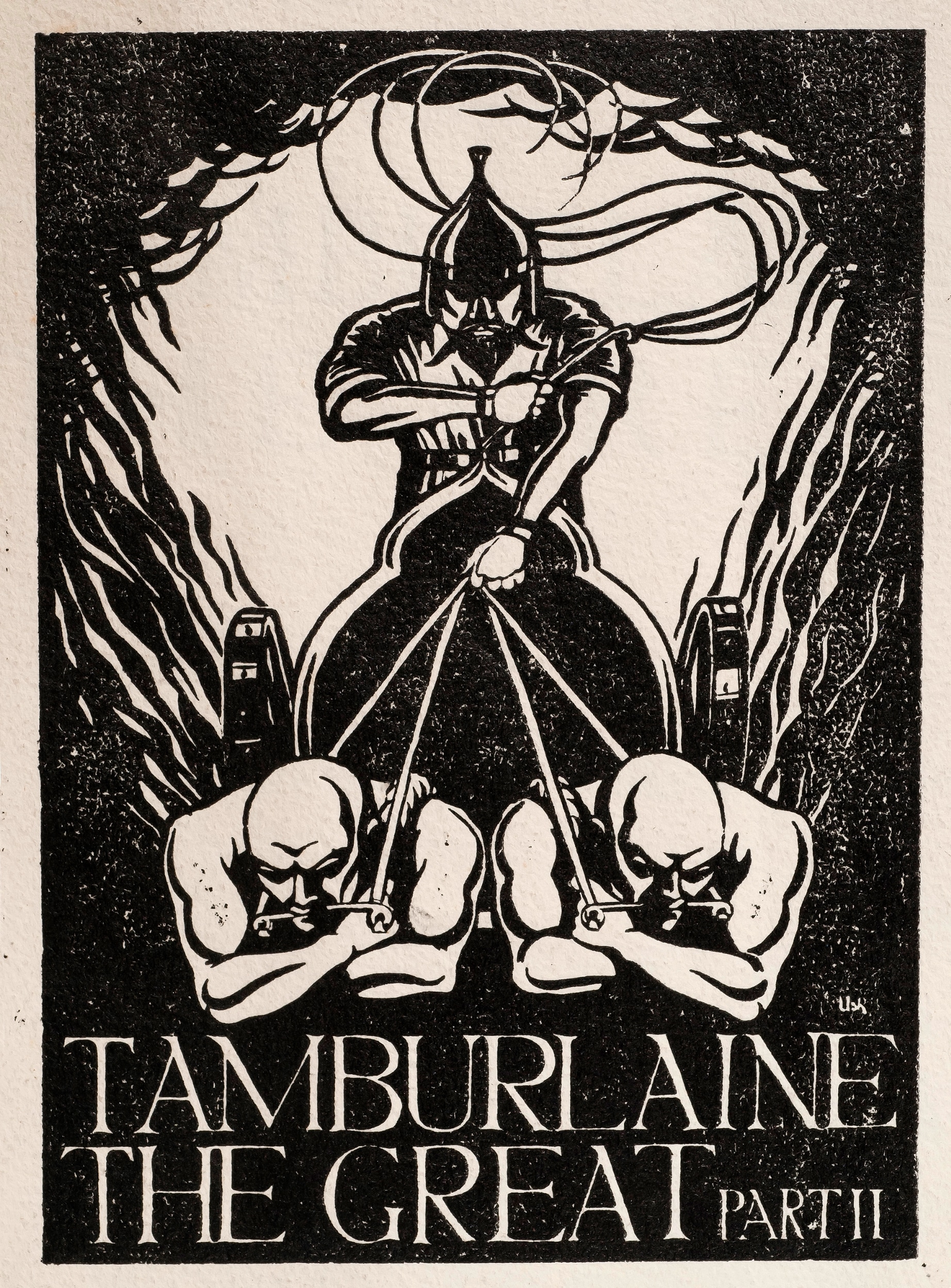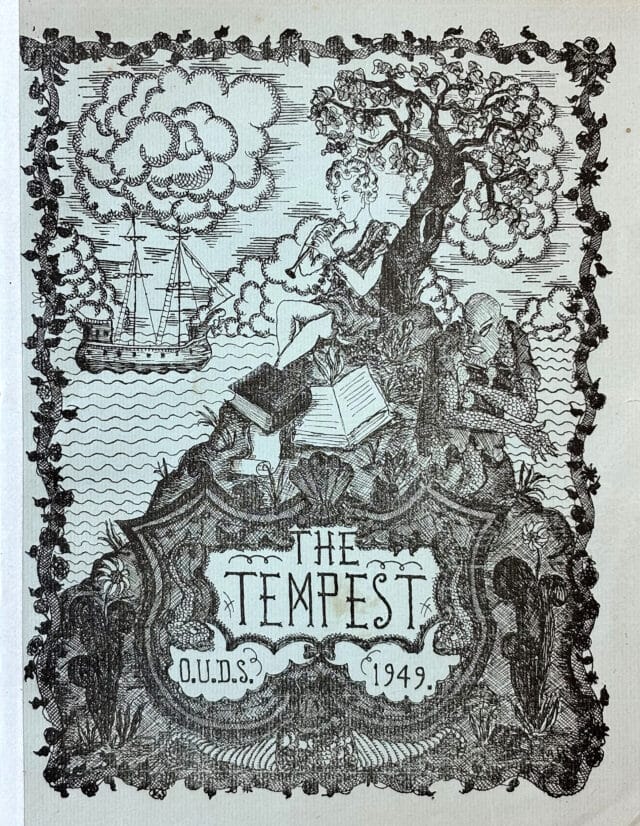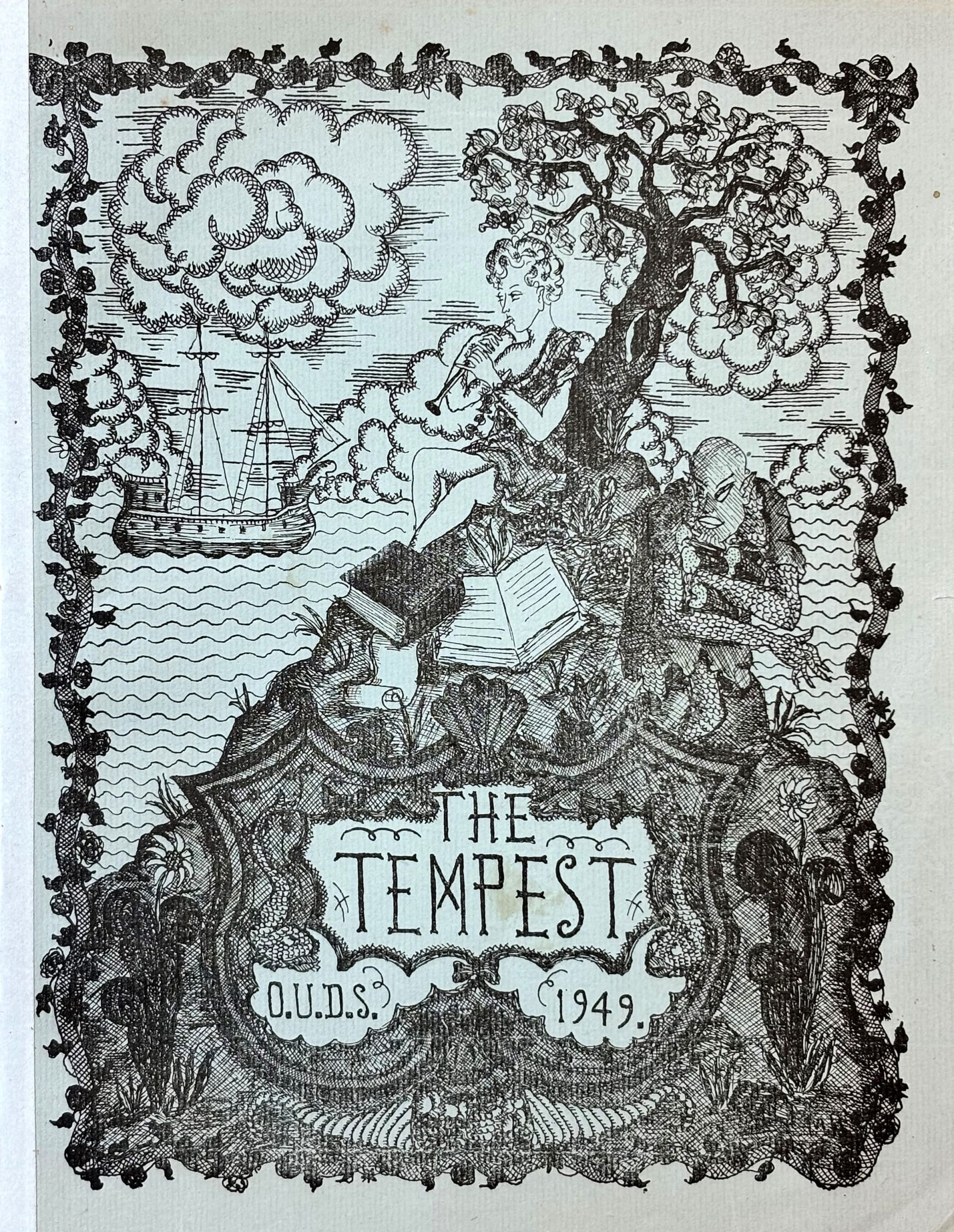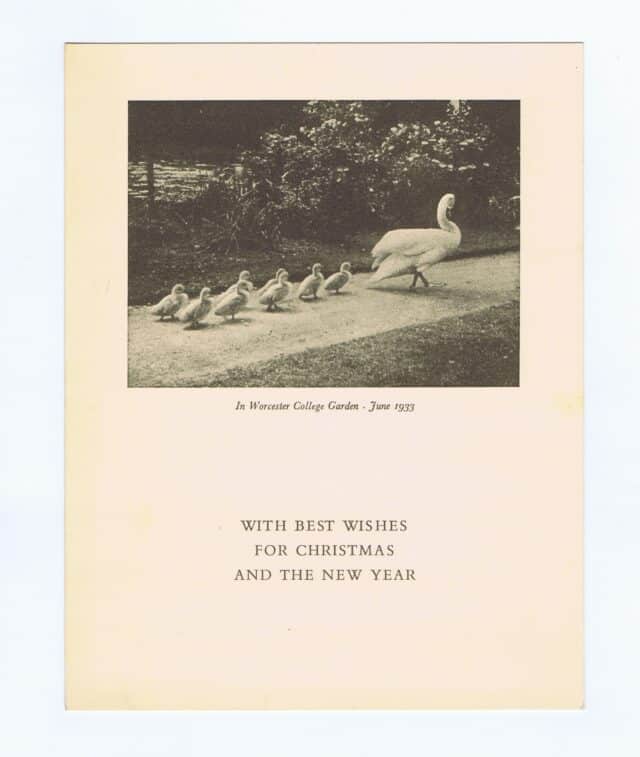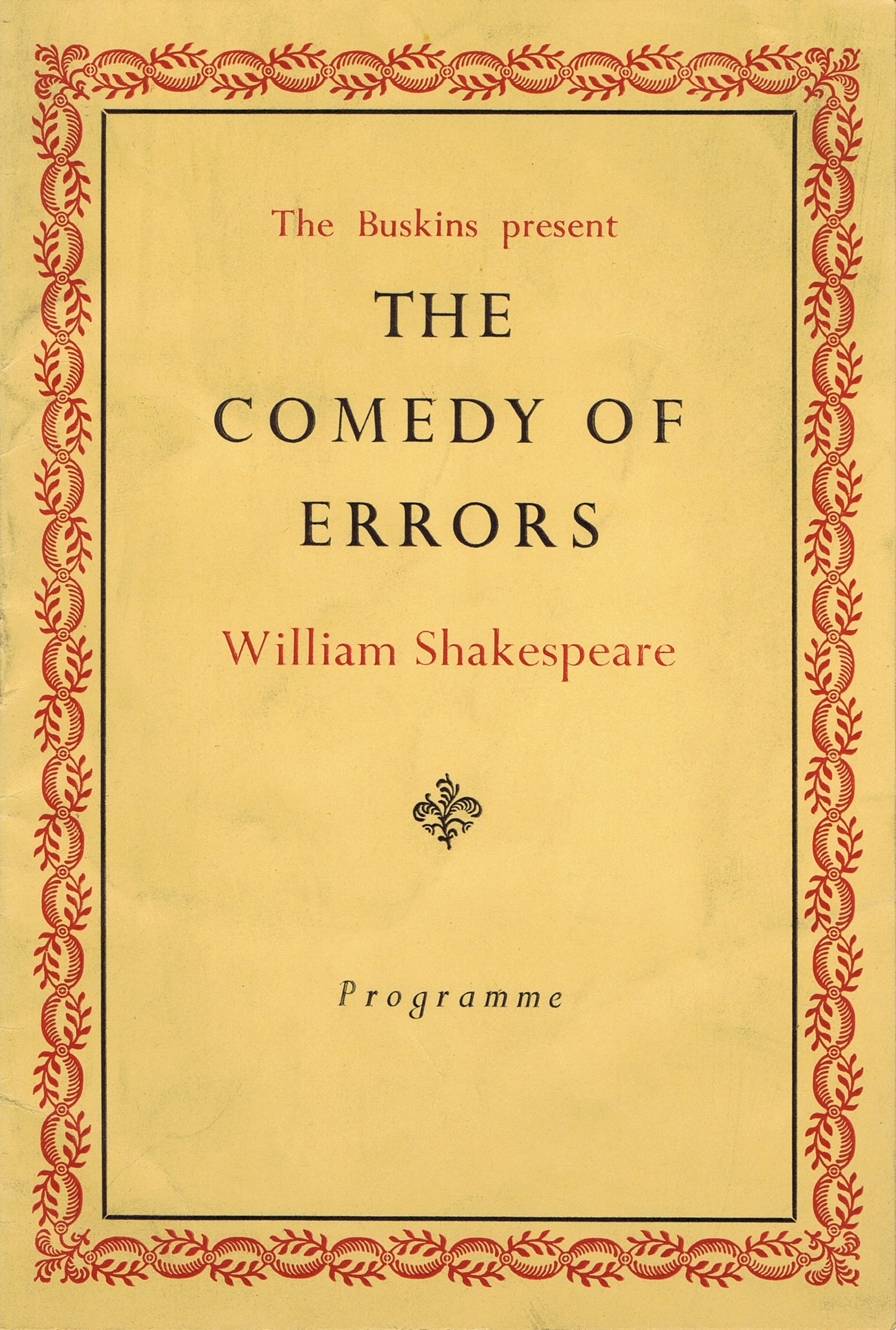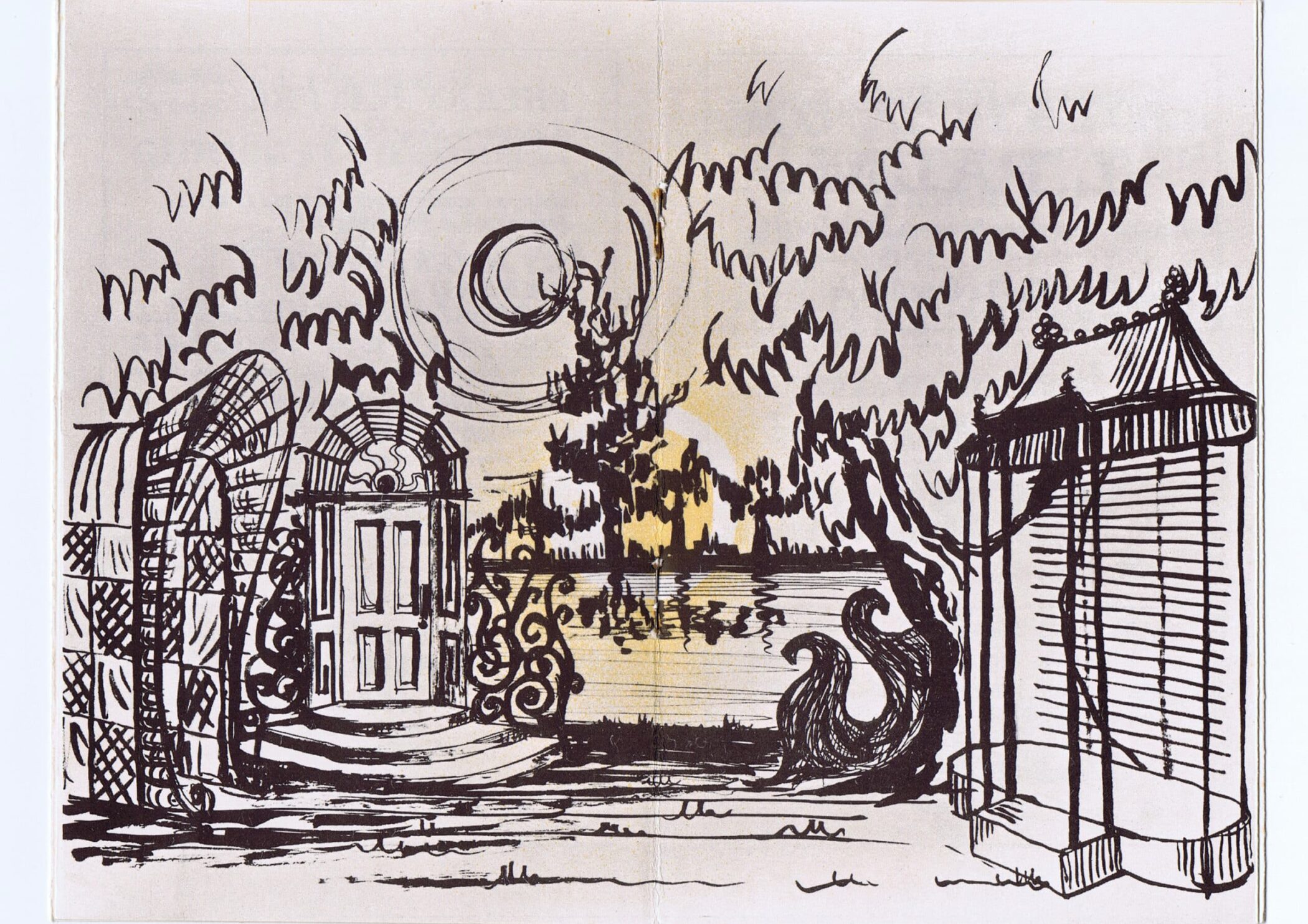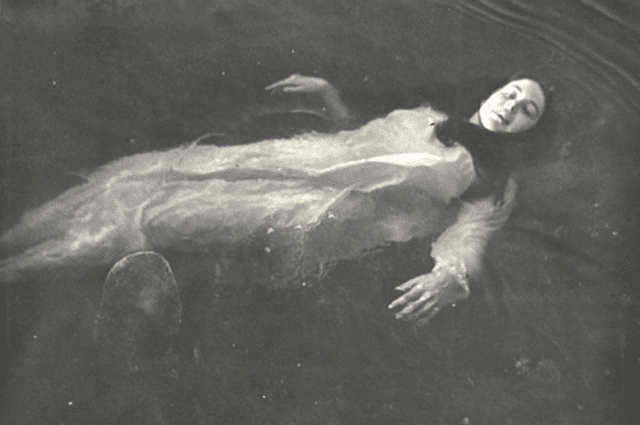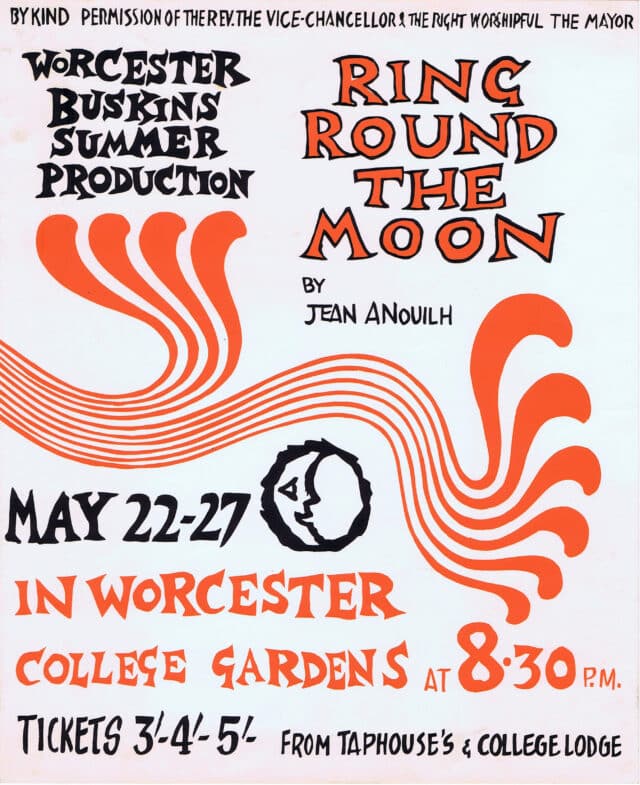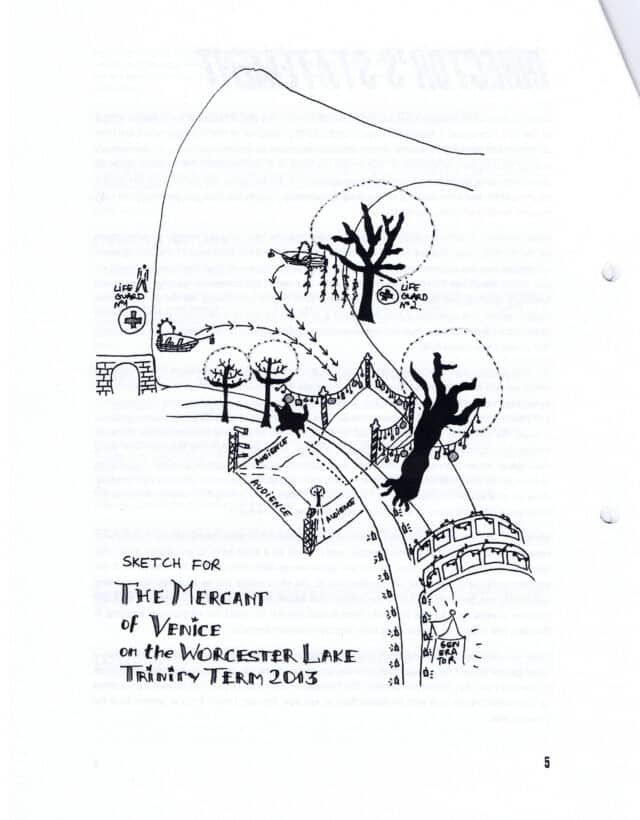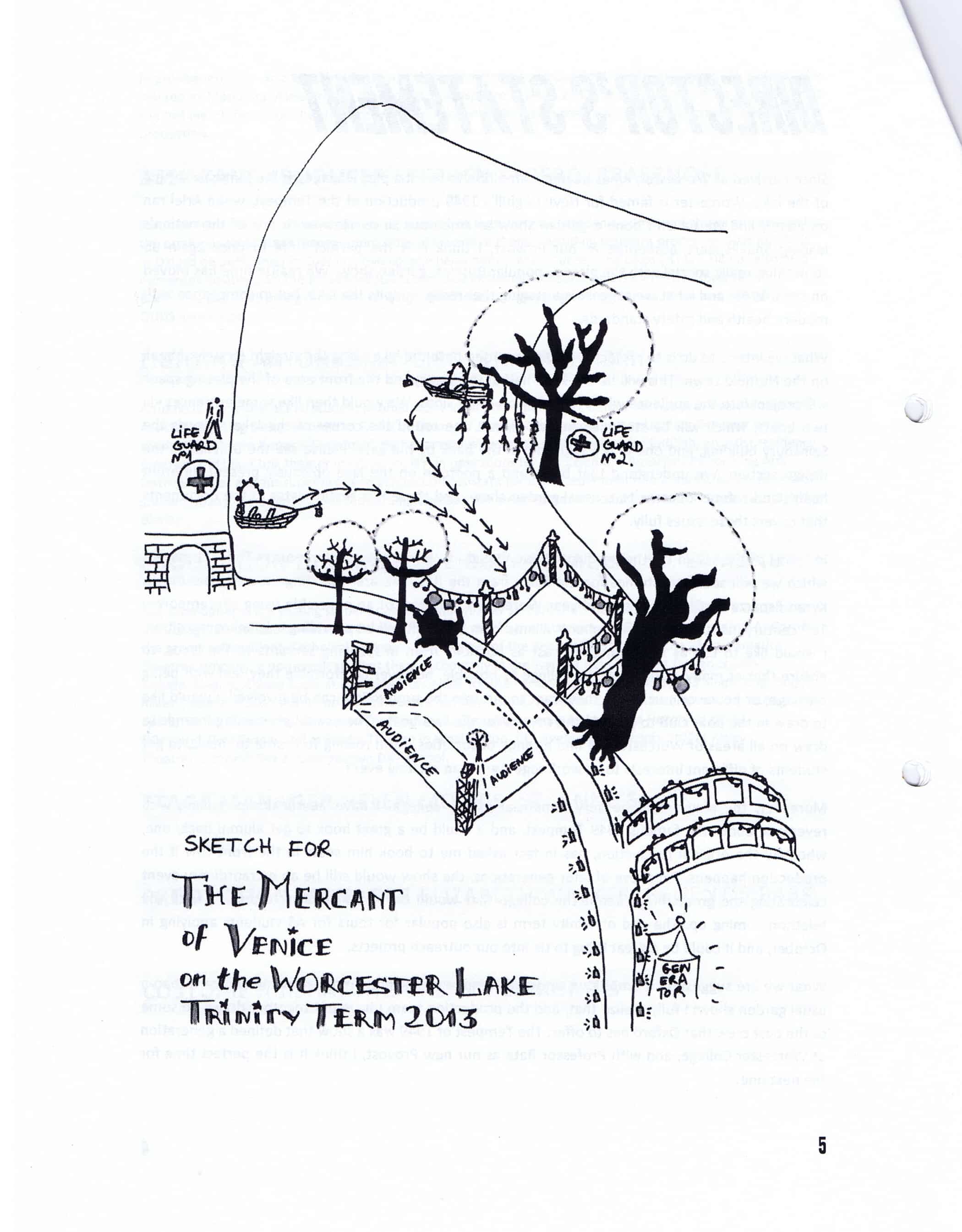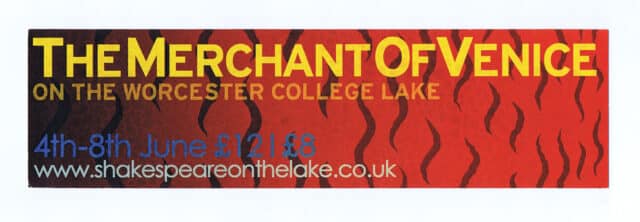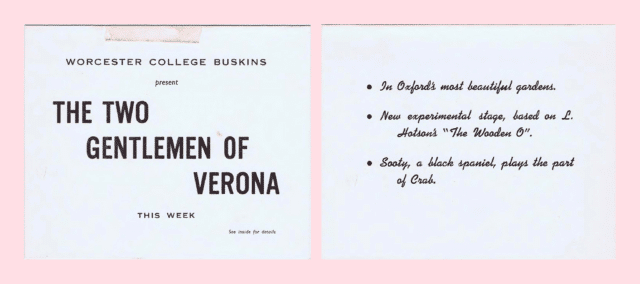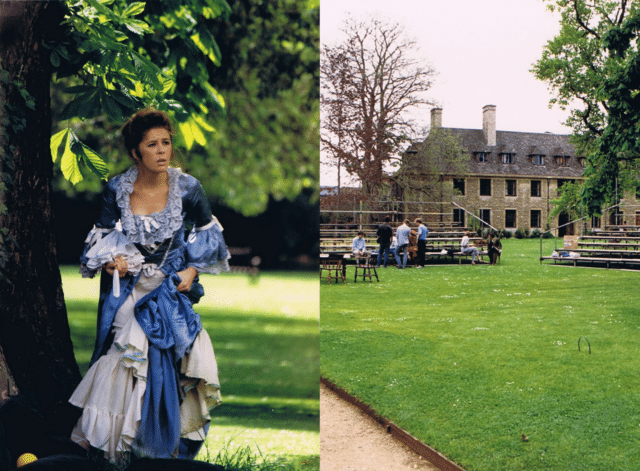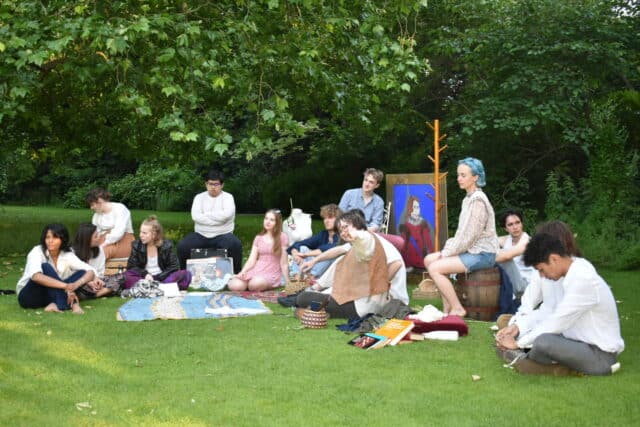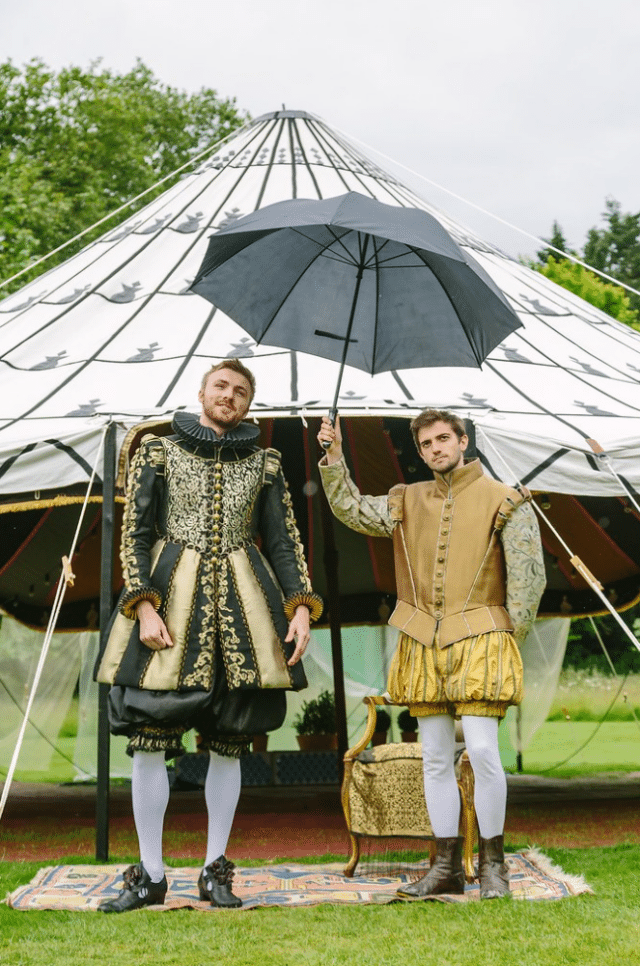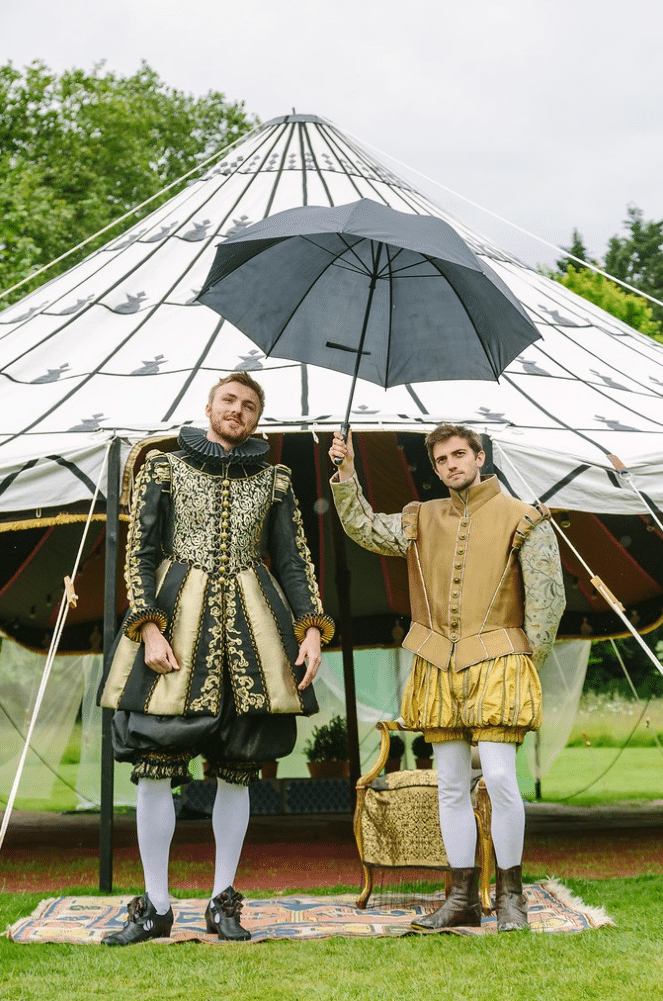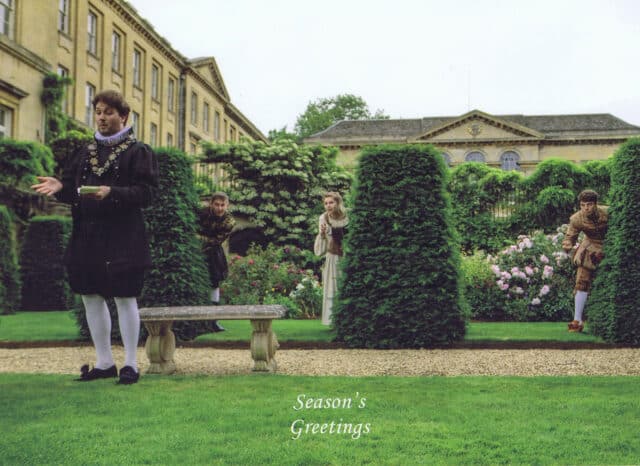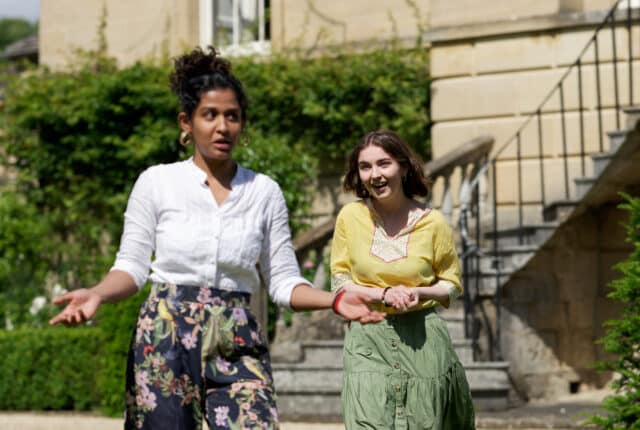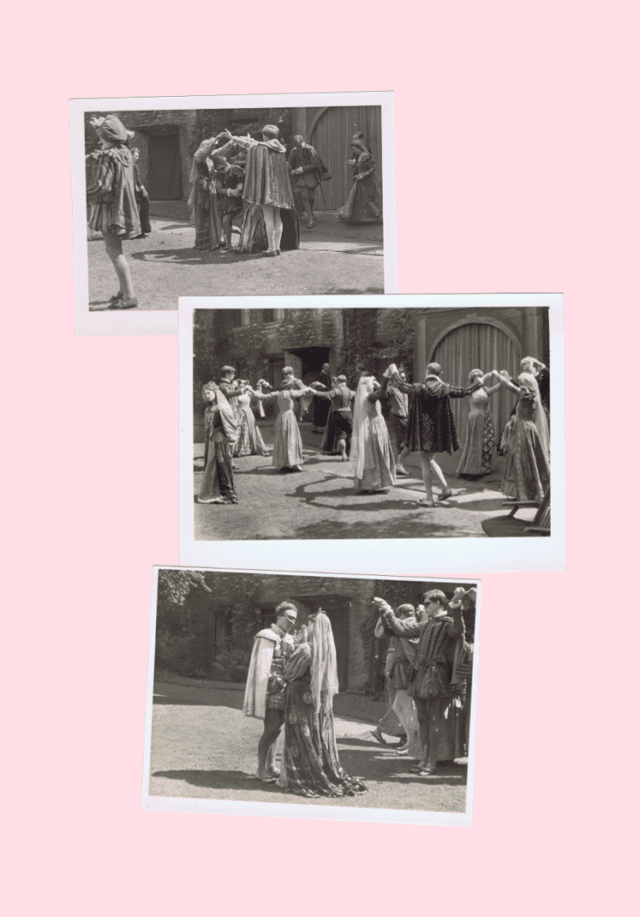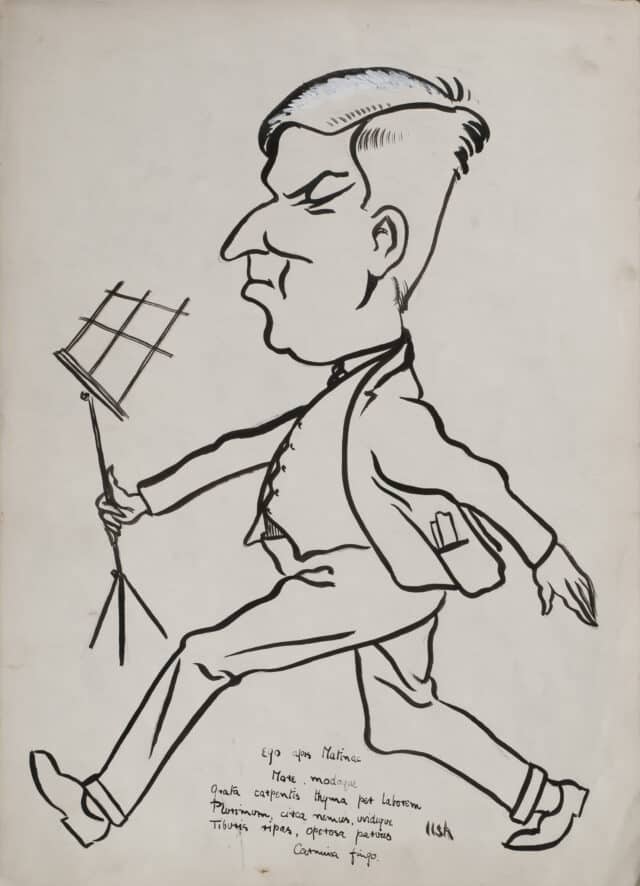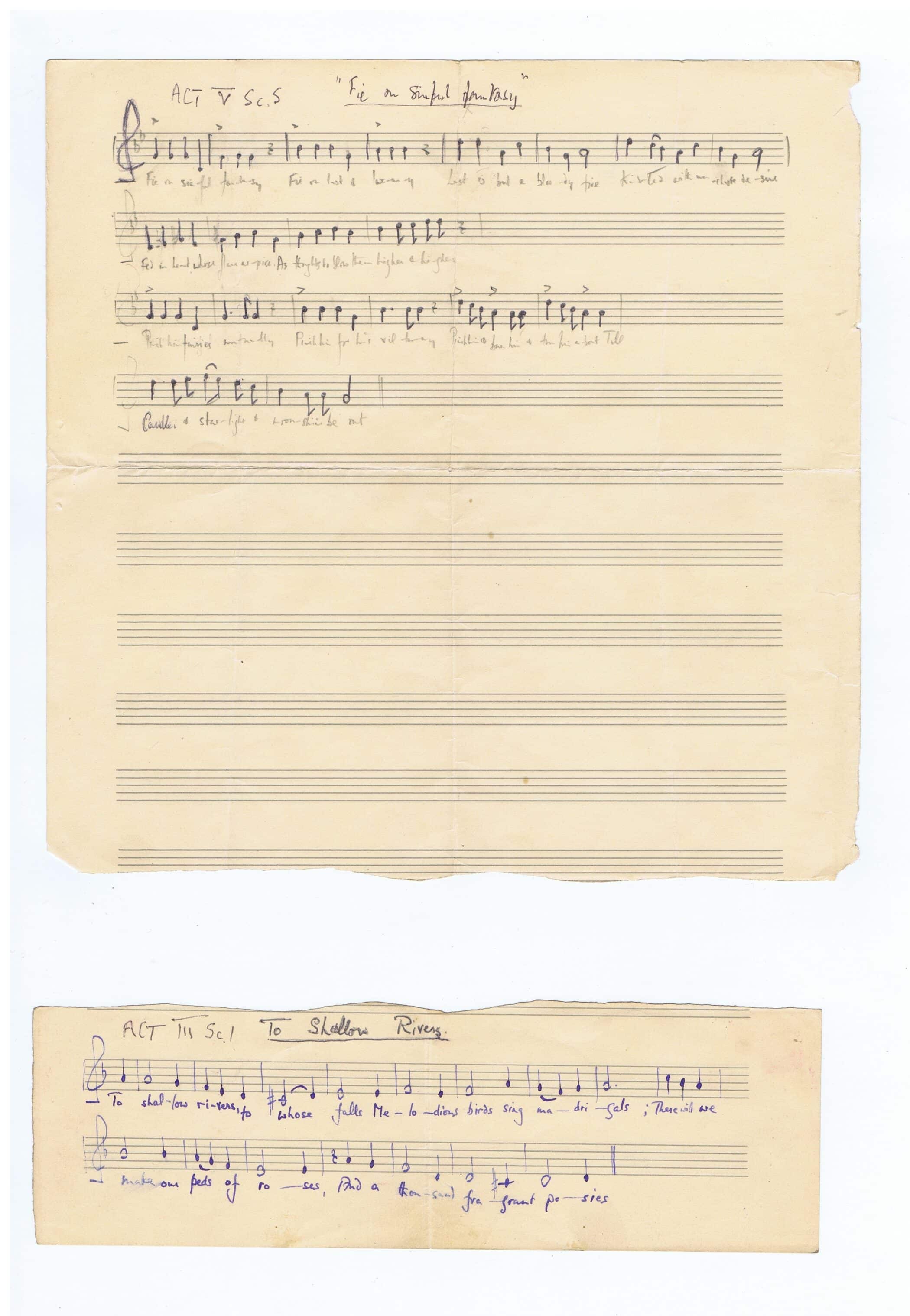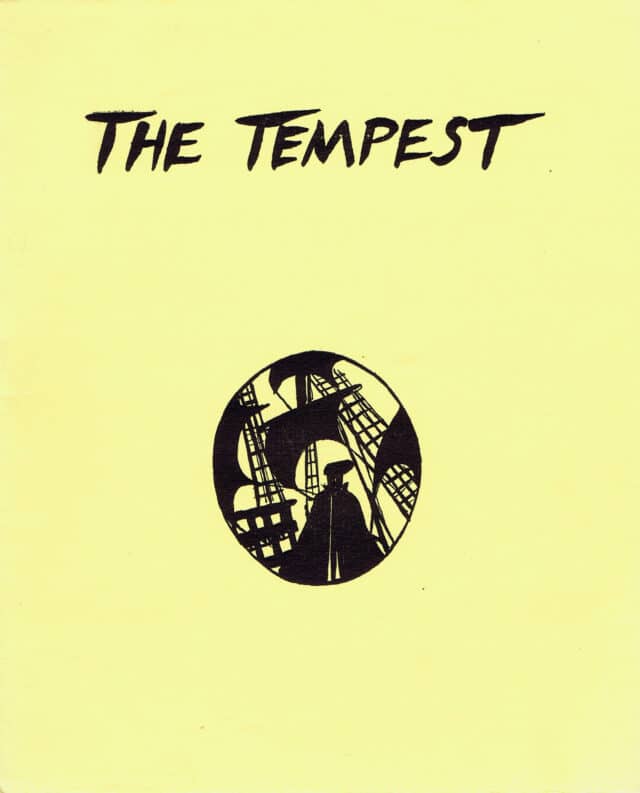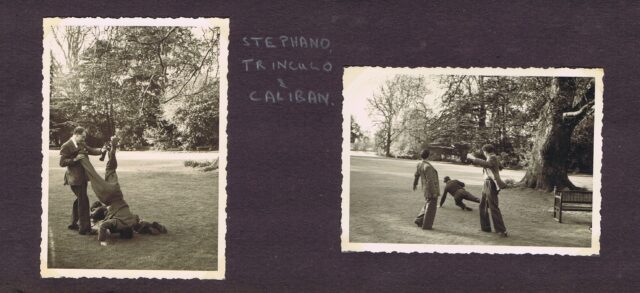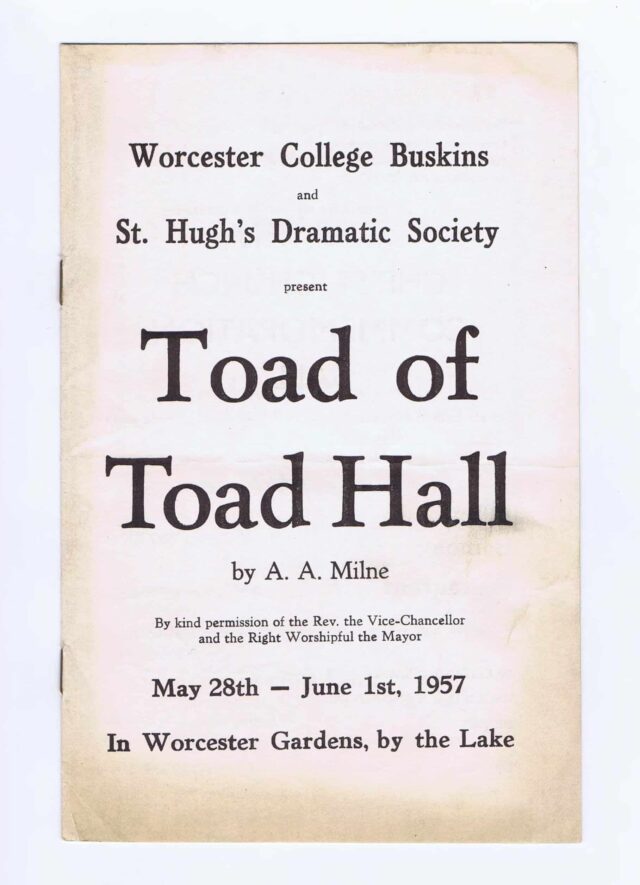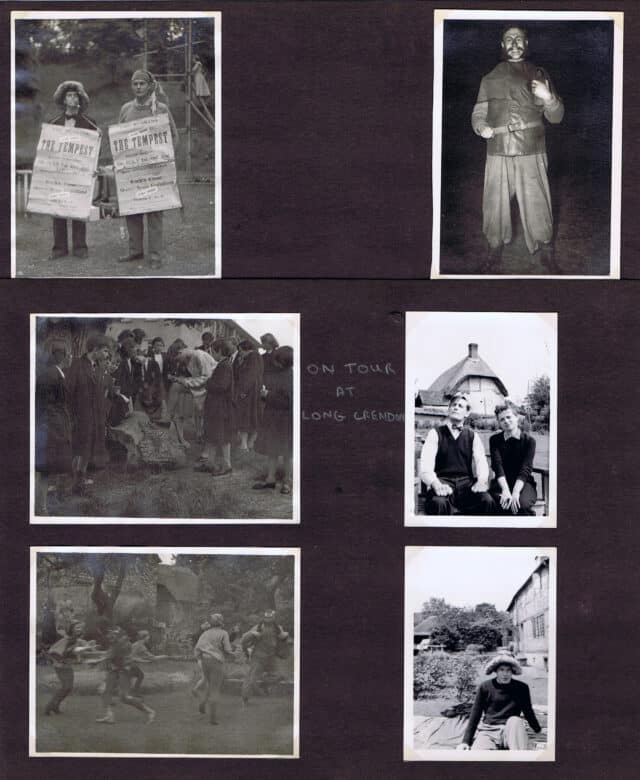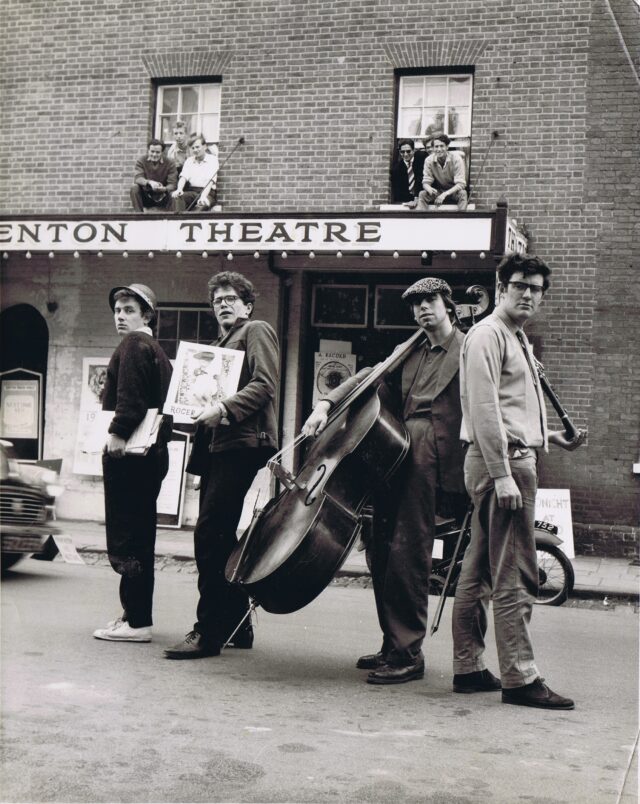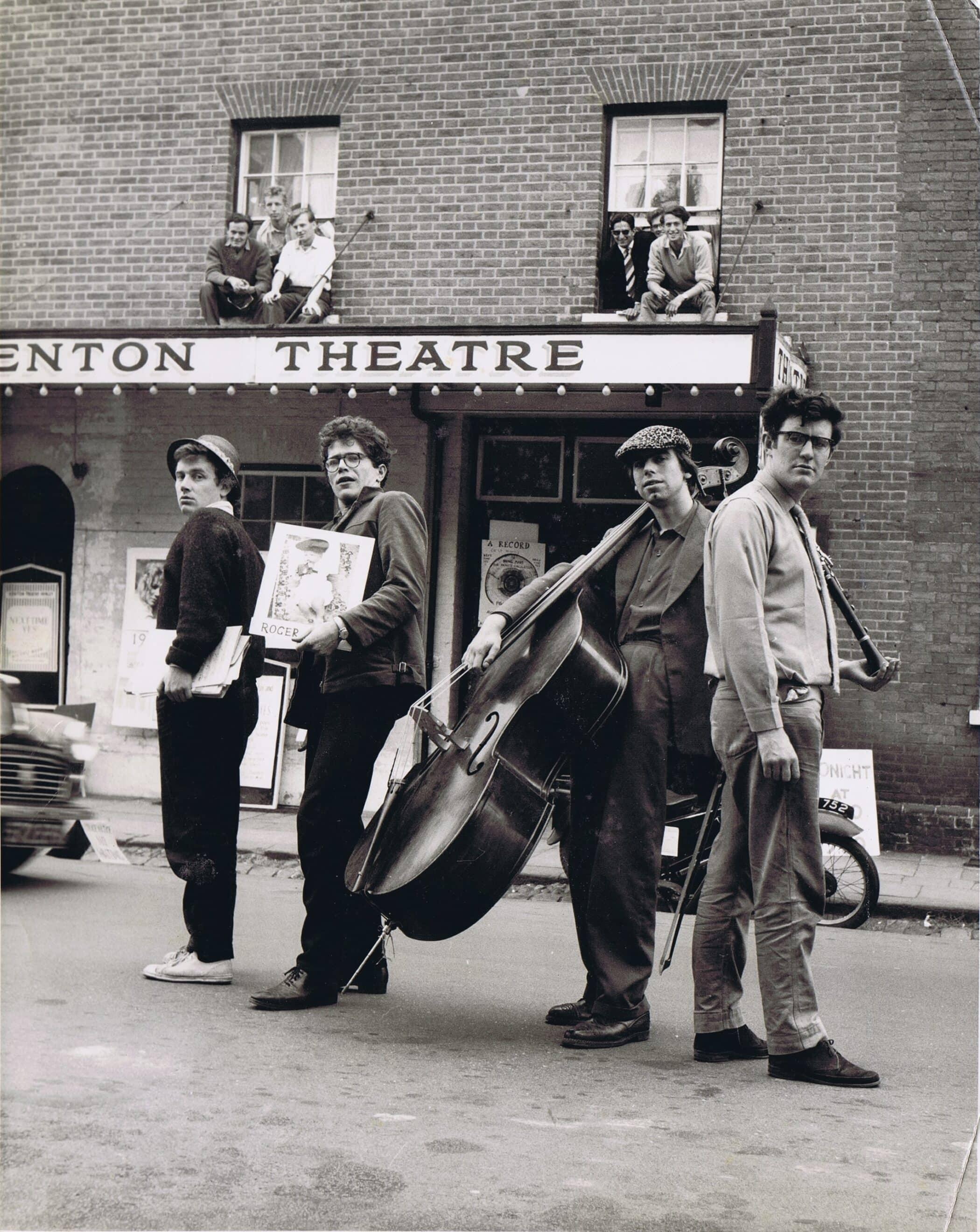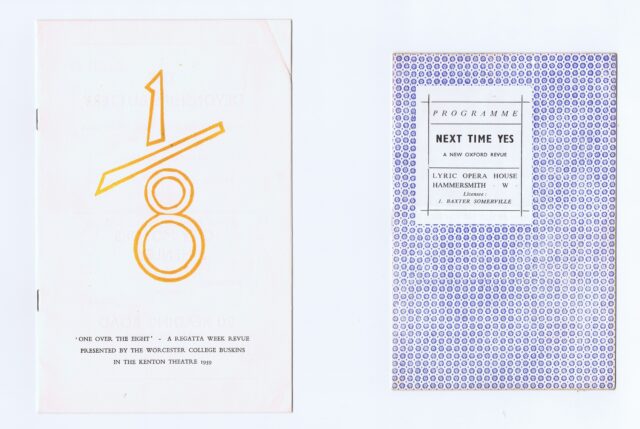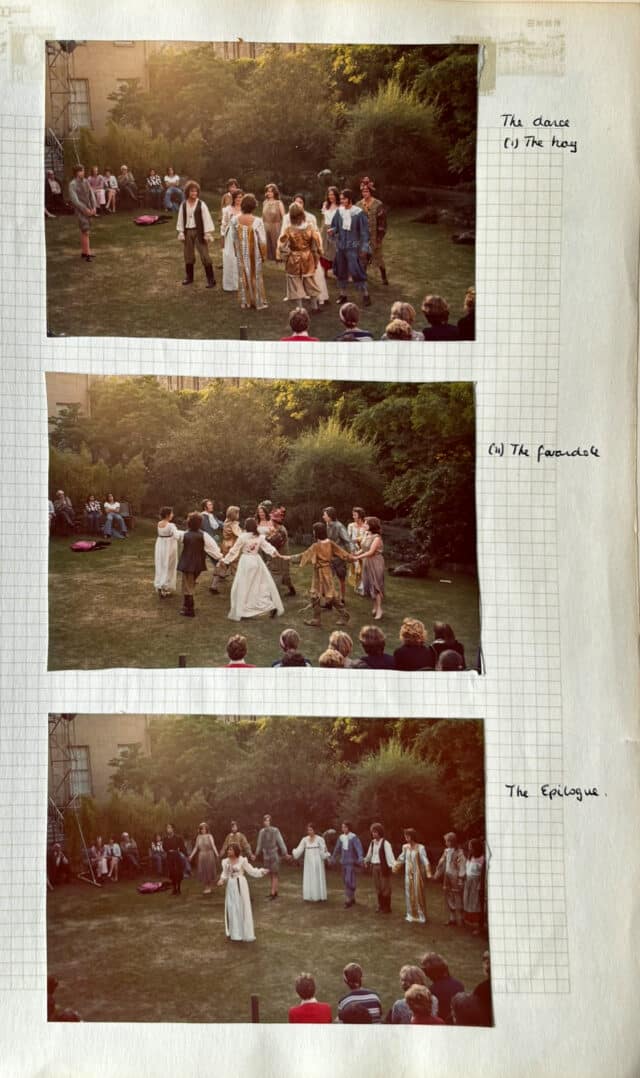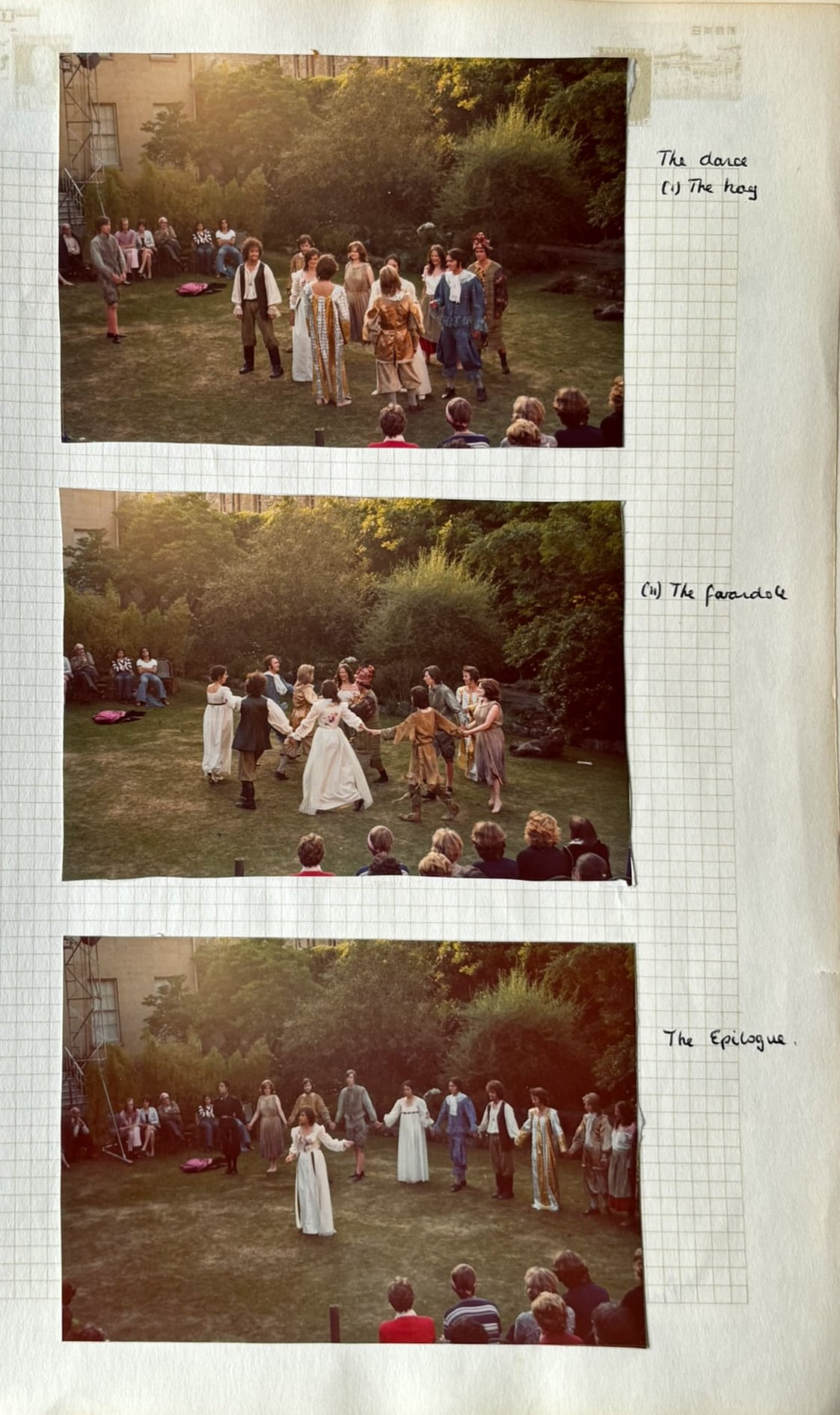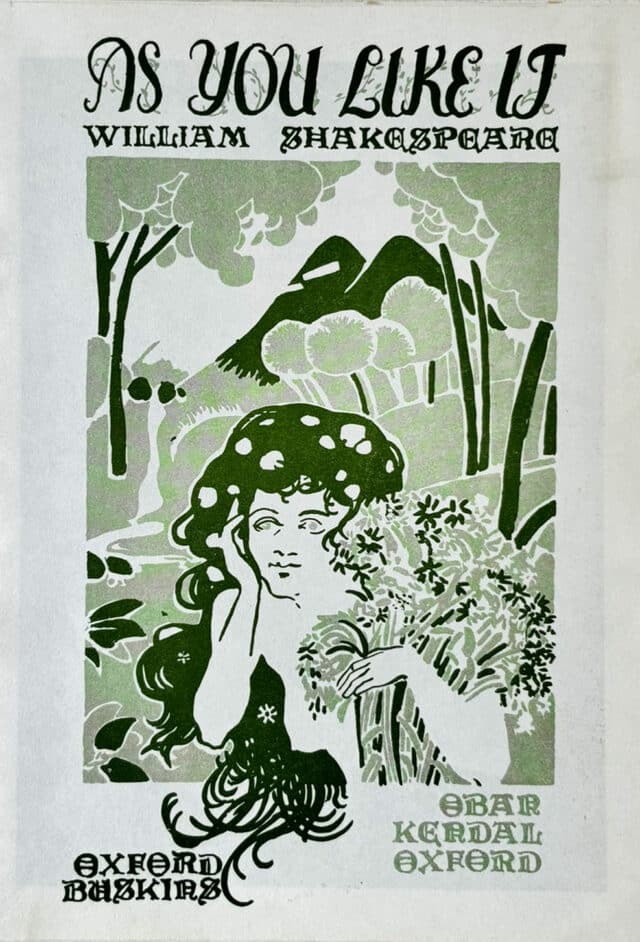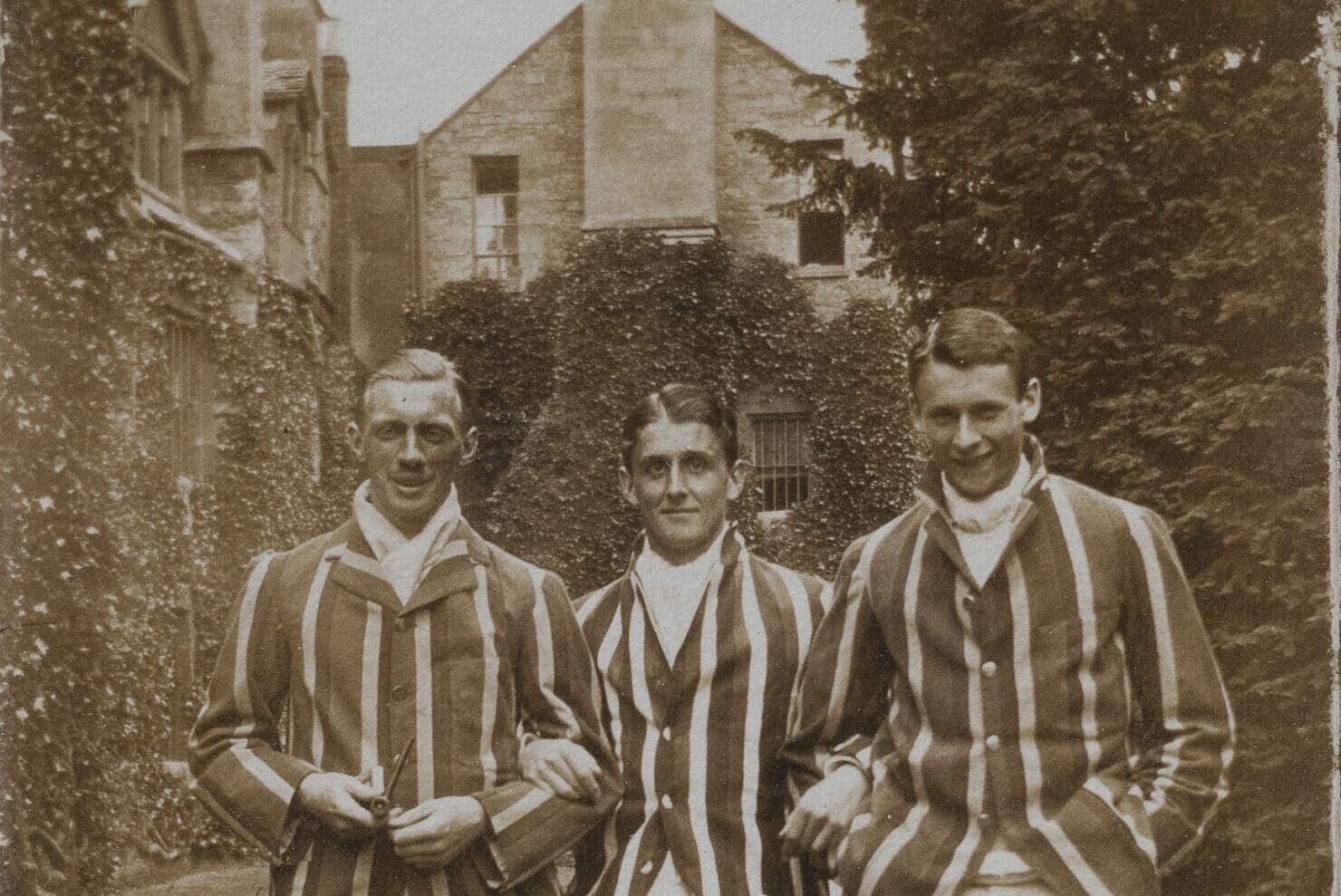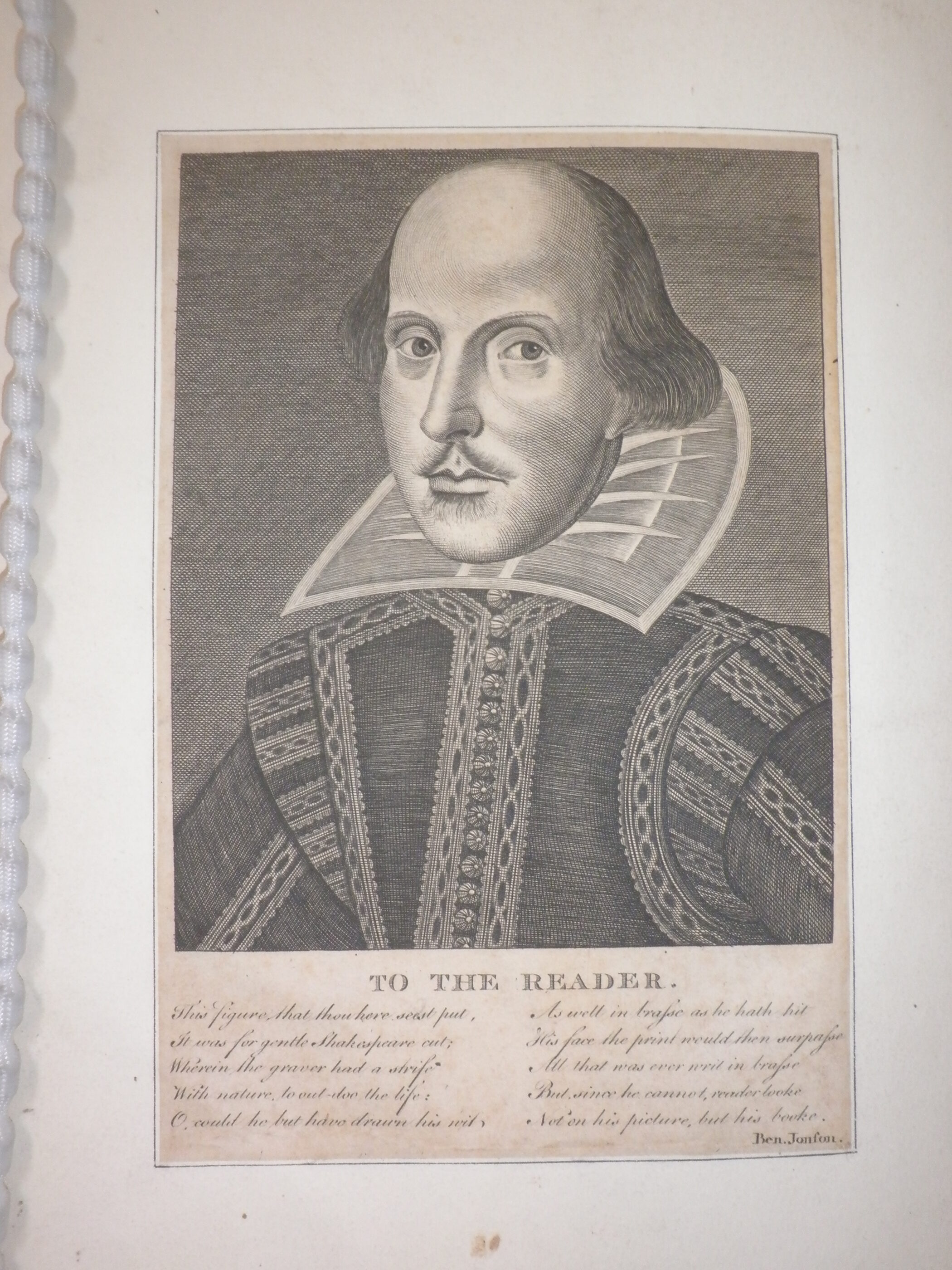Explore the history of Worcester College Buskins, perhaps Oxford’s longest-running college dramatic society.
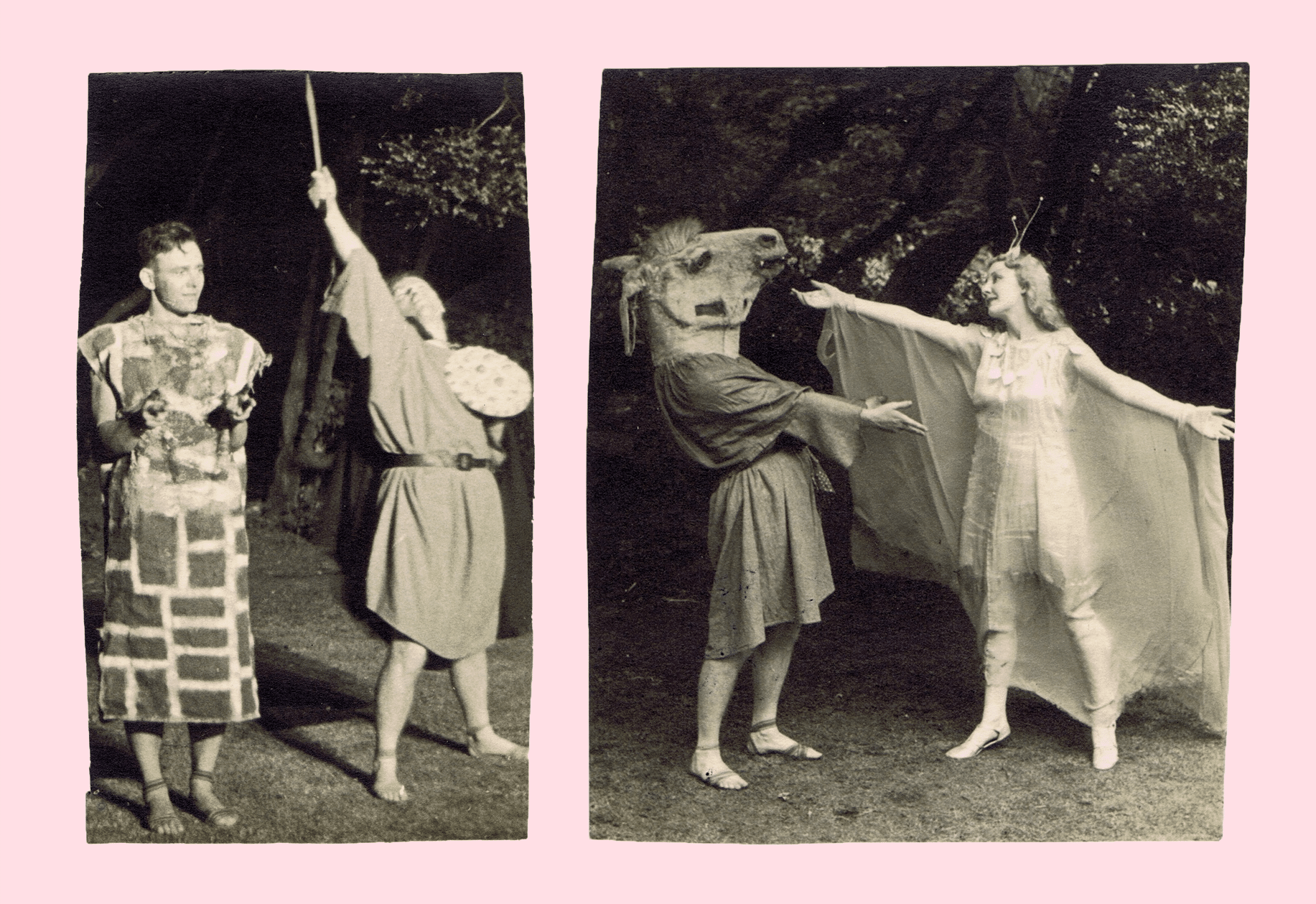

This exhibition has been curated by College Archivist Emma Goodrum. The six thematic sections are bookended by a poster timeline and a souvenir brochure to download. The exhibition was originally presented at the Buskins Gala Night in June 2024.
- Dramatic foundations
- The start of Shakespeare
- Buskins on the lake
- Buskins in the gardens
- Music and lyrics
- Buskins on tour
Dramatic foundations
Worcester College Buskins has a strong claim to being the longest-running college drama society in Oxford, having been established in 1902 for ‘reading plays once a week in various members’ rooms’. As early as 1907, the Buskins had expanded into producing plays and there were several productions prior to the First World War, although none by Shakespeare.
The start of Shakespeare
There were no summer productions between 1927 and 1932; the minute books of the Buskins do not even record meetings during the Trinity terms of those years. But in 1933 the Buskins began a collaboration with Nevill Coghill that would lay the foundations for the Worcester tradition of Shakespeare in the summer.
Buskins on the lake
From the first production of The Tempest in 1934, when Caliban emerged from the lake, to the 2013 production of The Merchant of Venice, which floated the stage on the surface of the water, the Buskins have used the lake in a variety of ways in the past 90 years.
Buskins in the gardens
The Buskins has not limited itself to including the lake in productions; they have also made good use of the historic buildings as an alternative backdrop.
Music & lyrics
Buskins productions have often featured original music or musical adaptations. In the post-war period in particular, original music featured in abundance – whether for Shakespeare’s classic songs or singing amphibians.
Buskins on tour
In the 1950s, 60s and 70s, the Buskins took several productions on tour during the Long Vacation. Often, it would be the same production that they had staged in the College Gardens, but there were also comedy revues and even entirely new productions rehearsed from scratch in idyllic holiday conditions, such as the 1975 production of As You Like It which rehearsed and performed over 450 miles away in Oban.
Souvenir brochure
A history since 1902
We have a limited number of printed copies of the souvenir brochure available. If you’d like one, please email communications@worc.ox.ac.uk with your name and address.
Do you have any Buskins memorabilia that you’d like to share with the Archives? Get in touch with Emma using the link below.
















